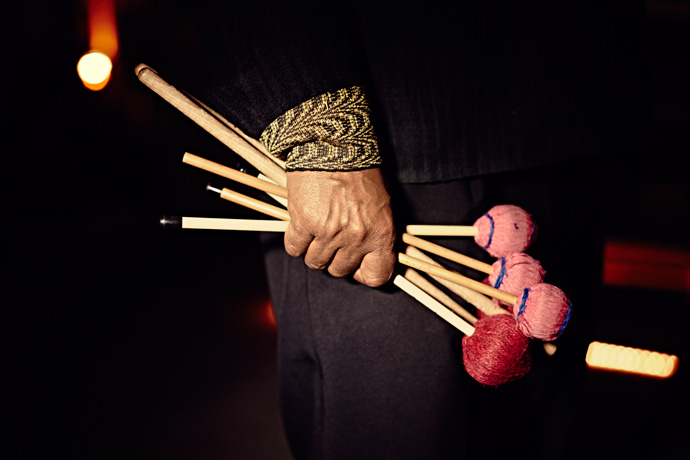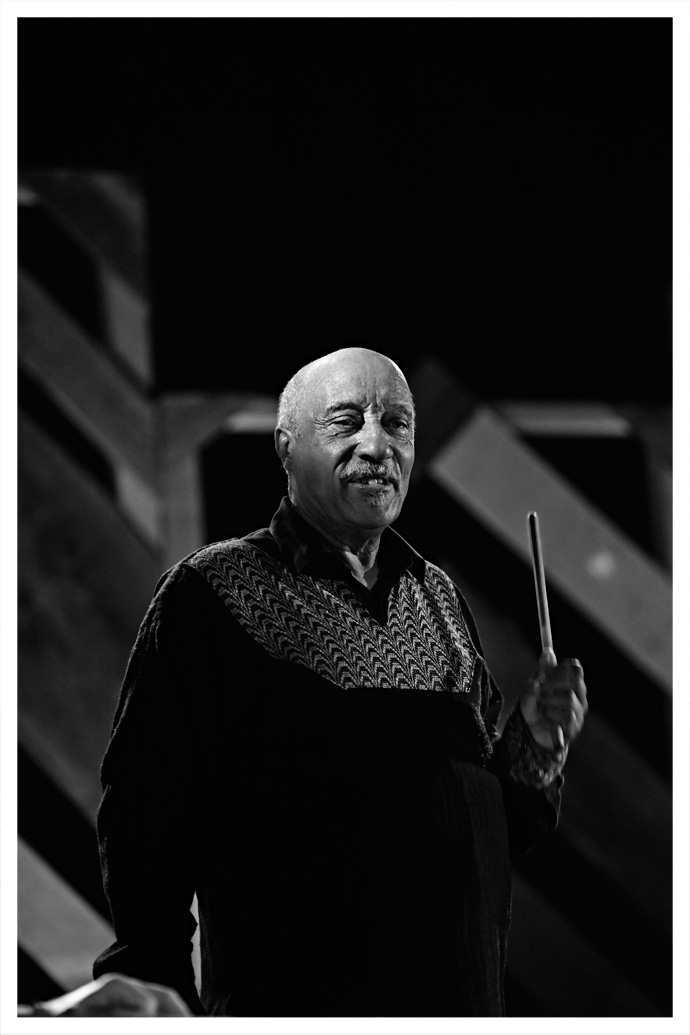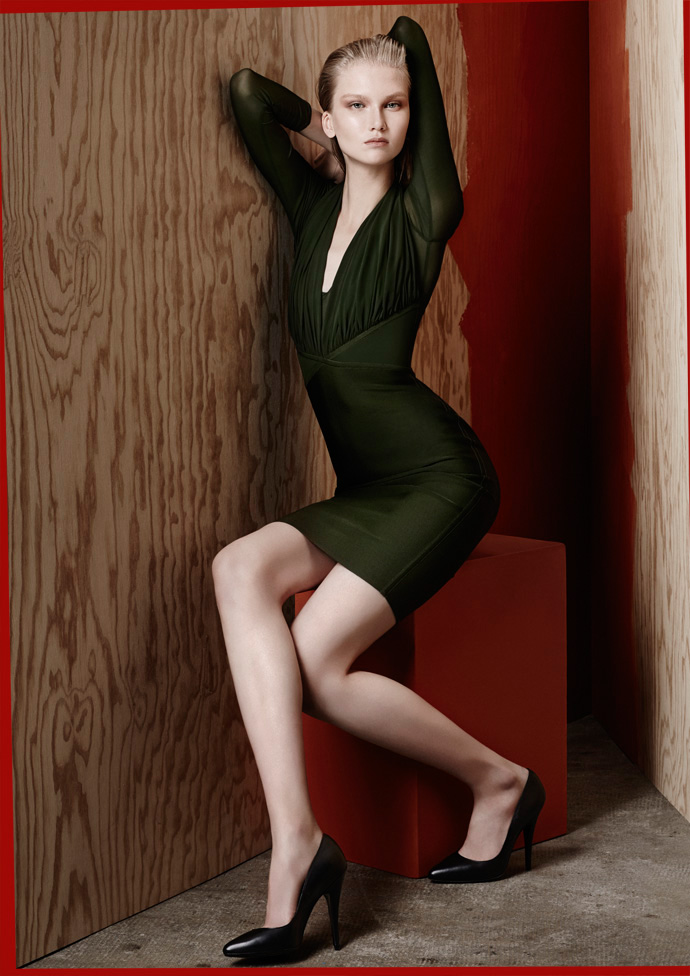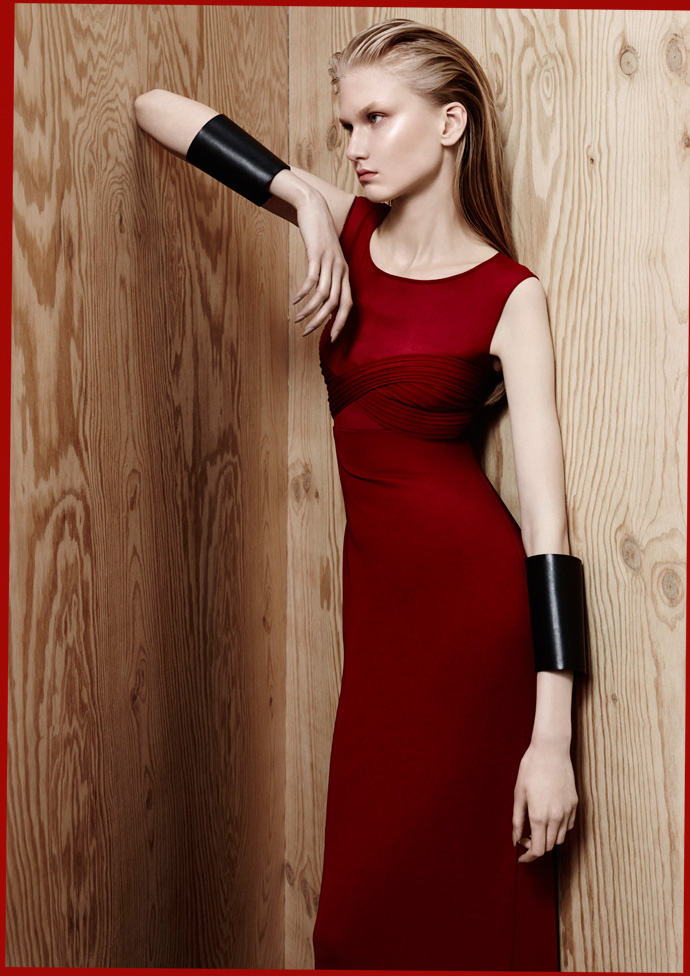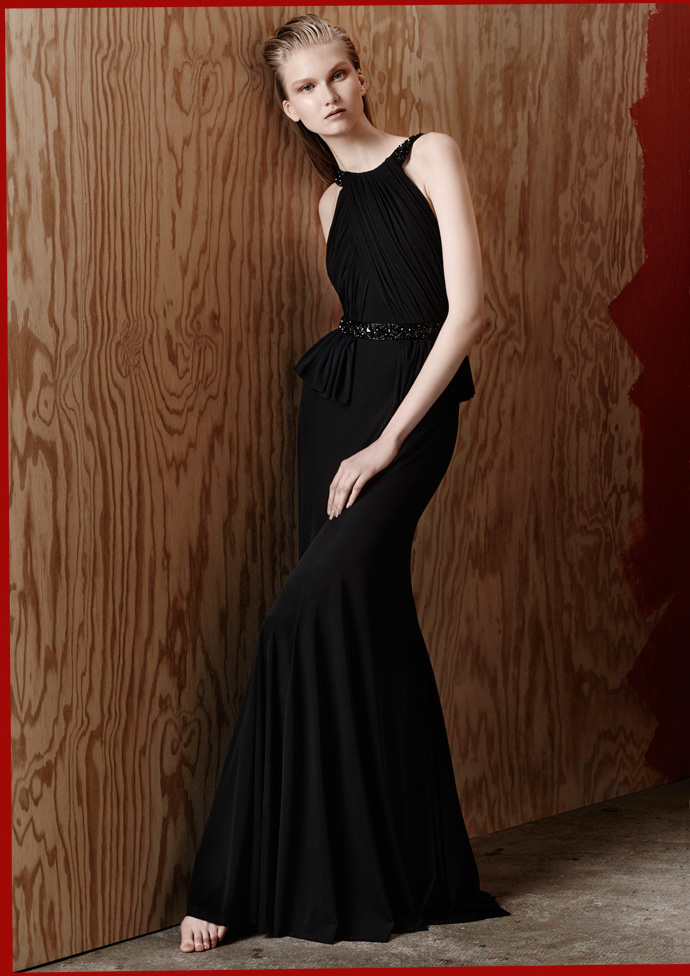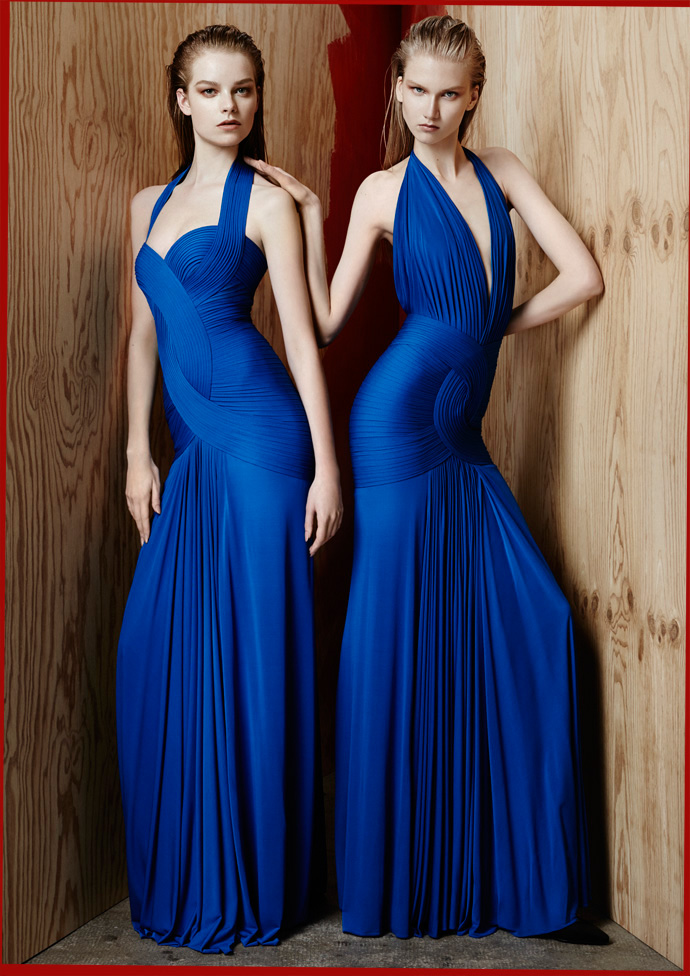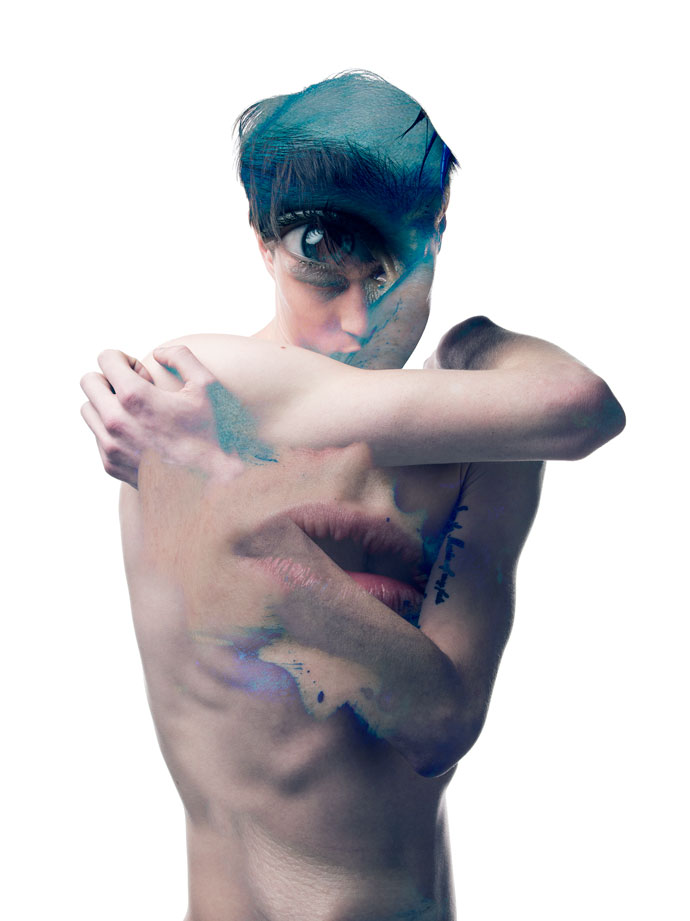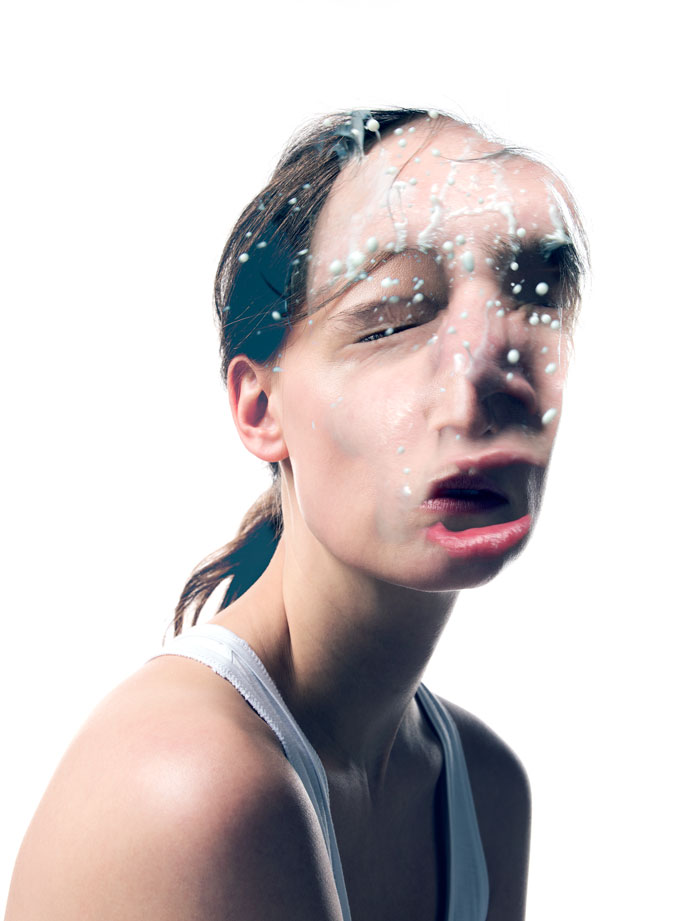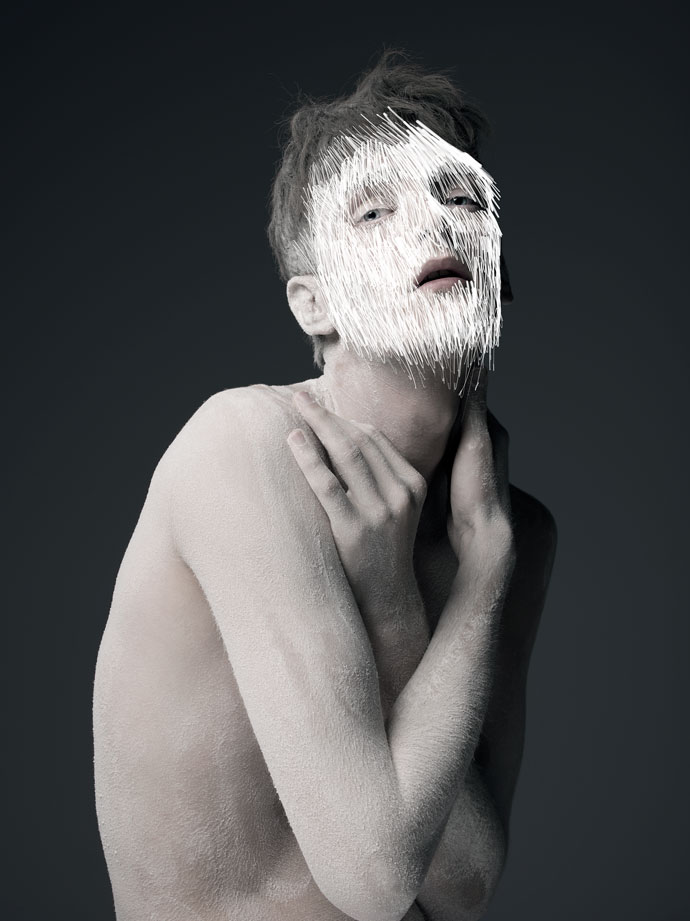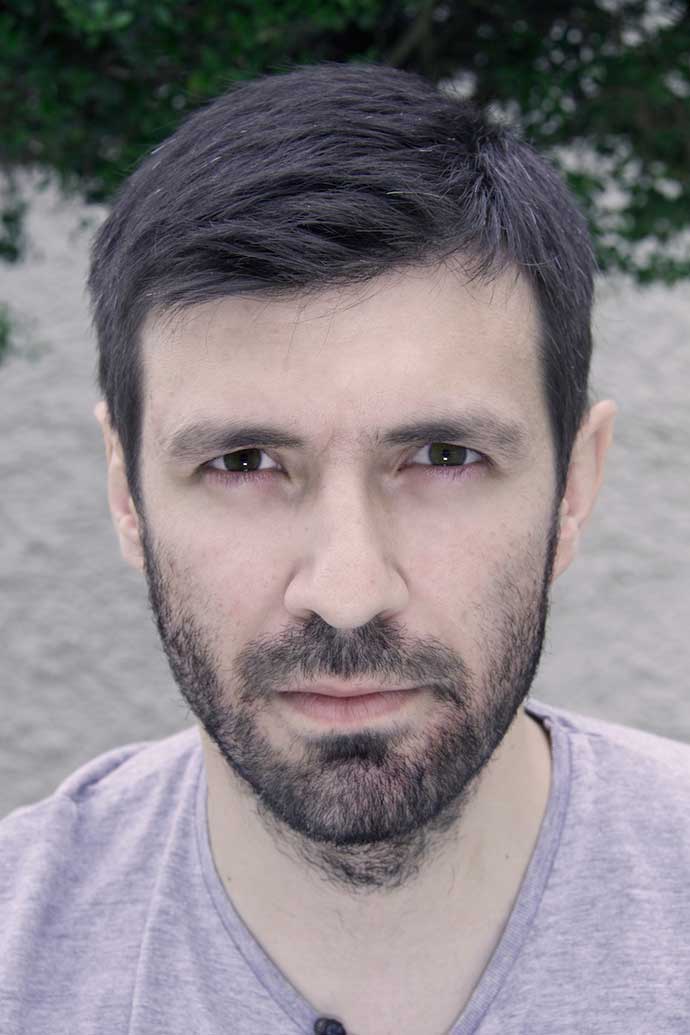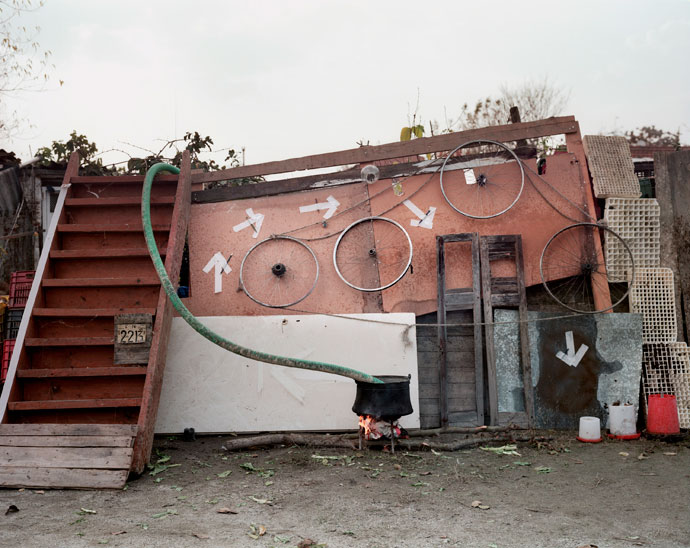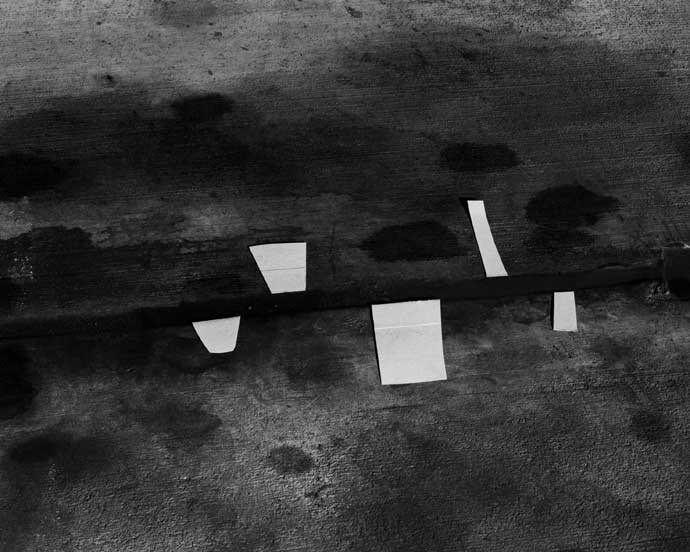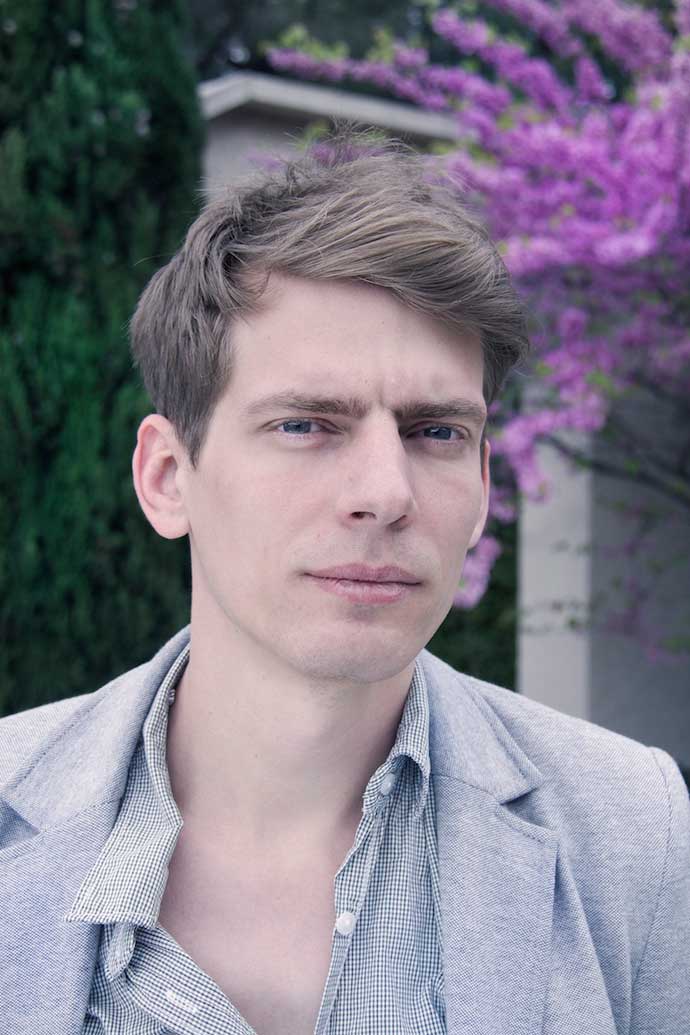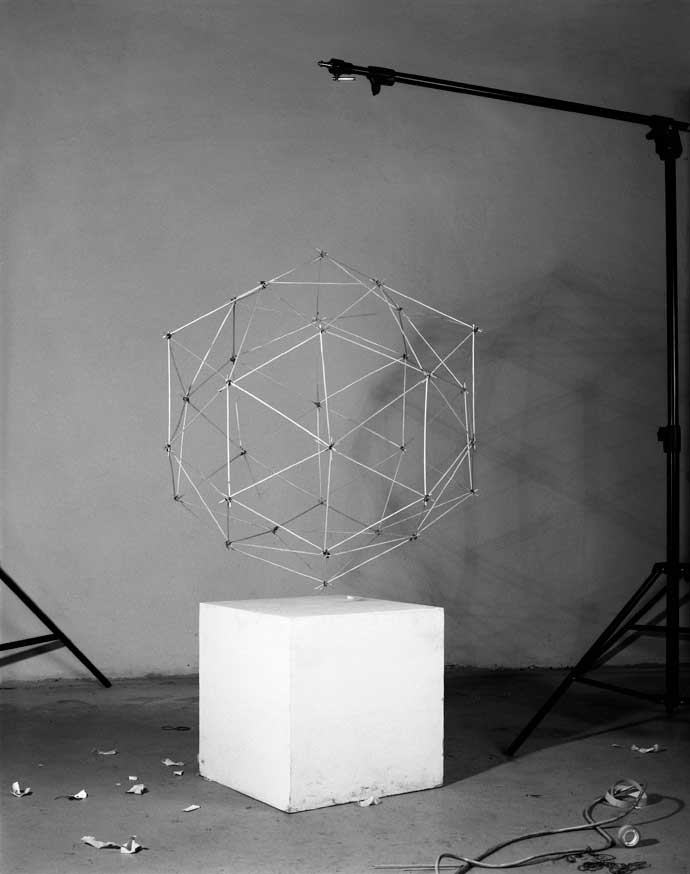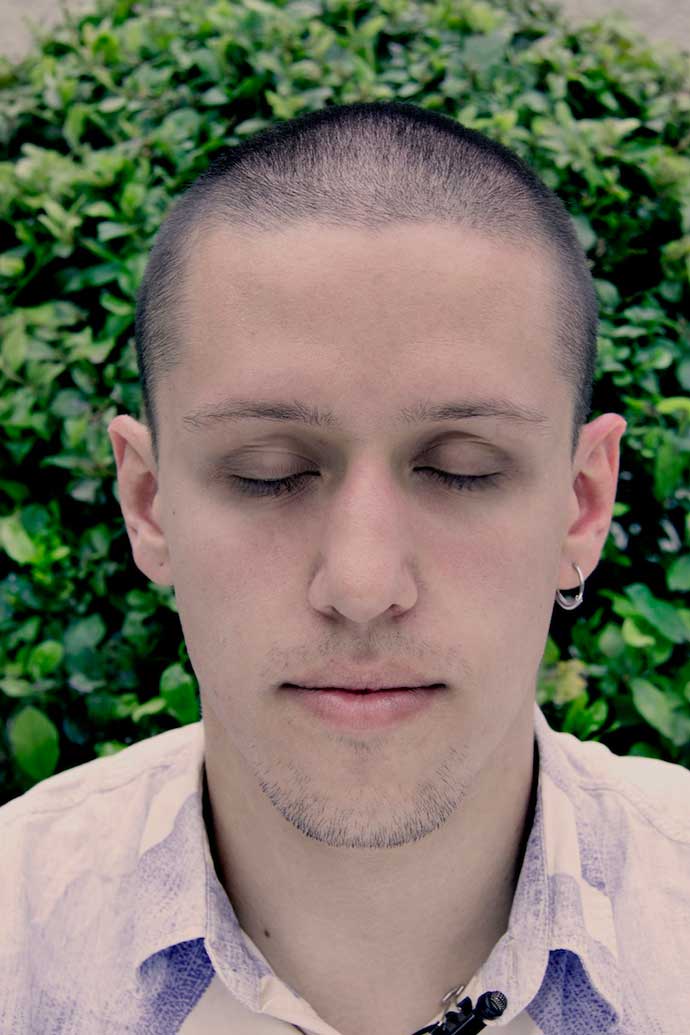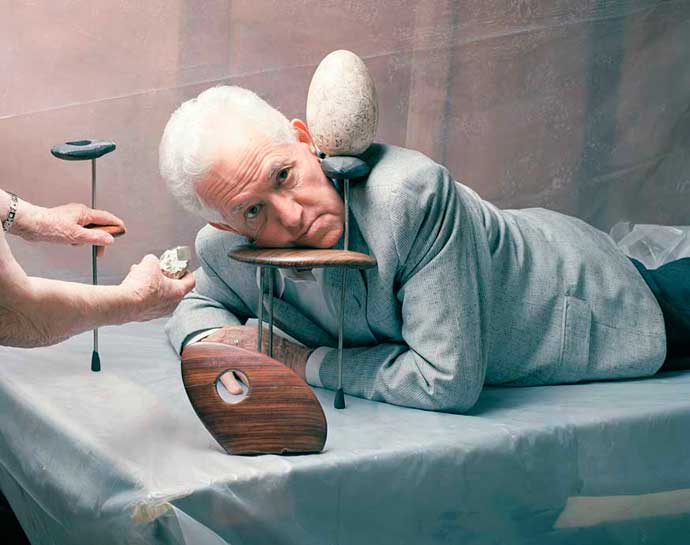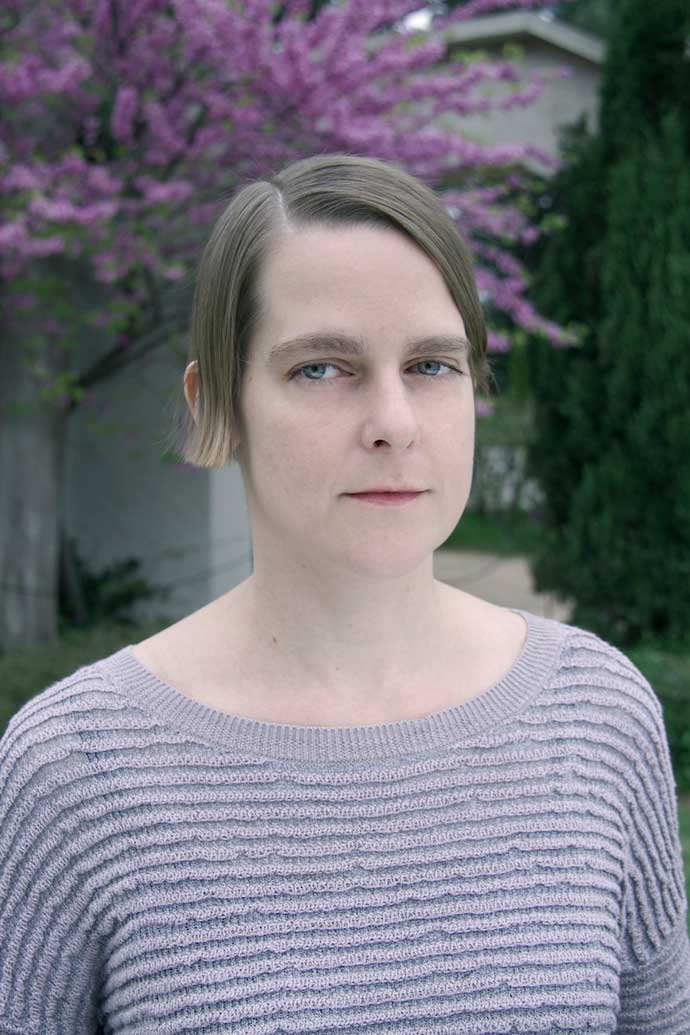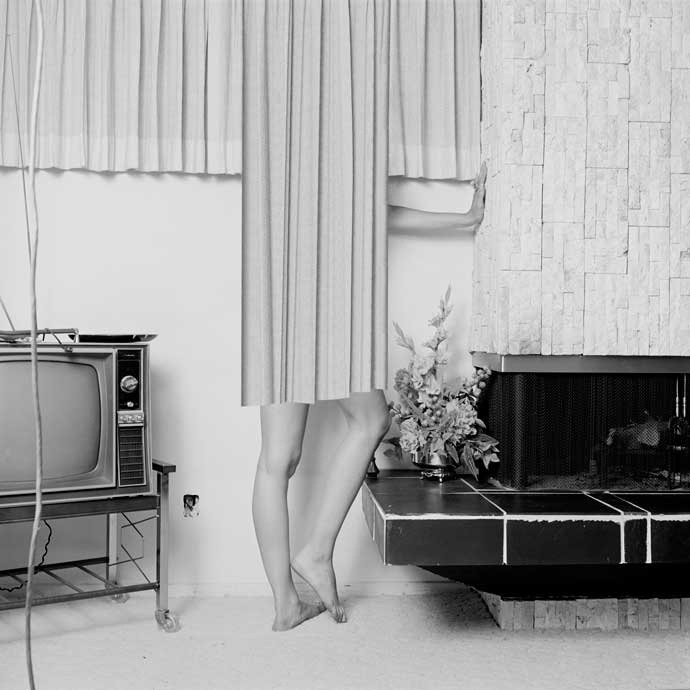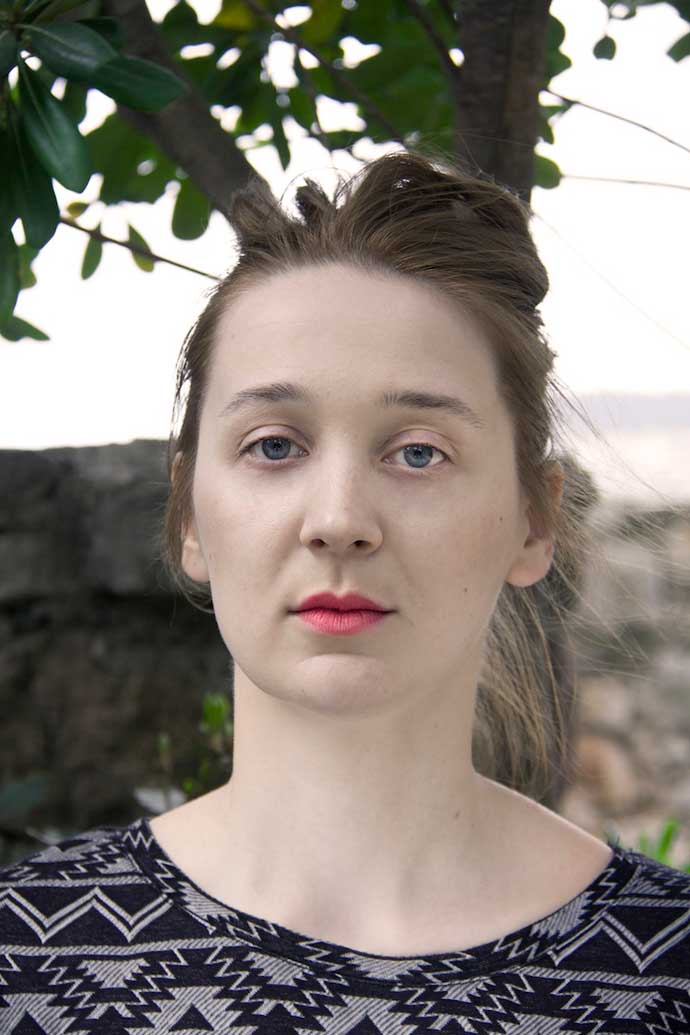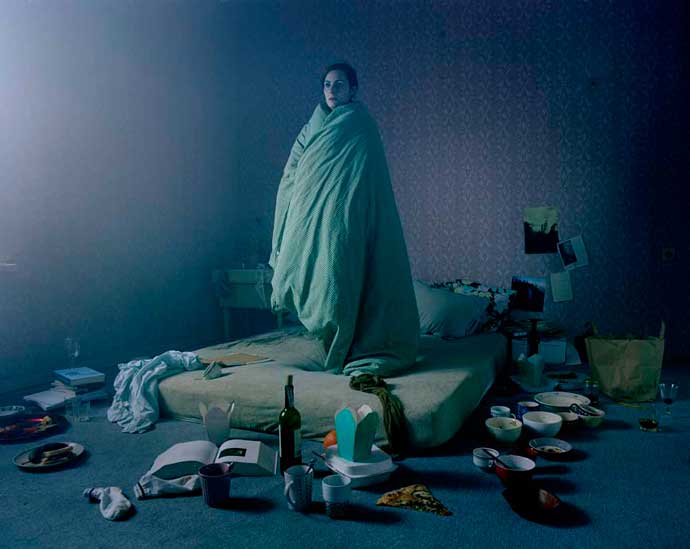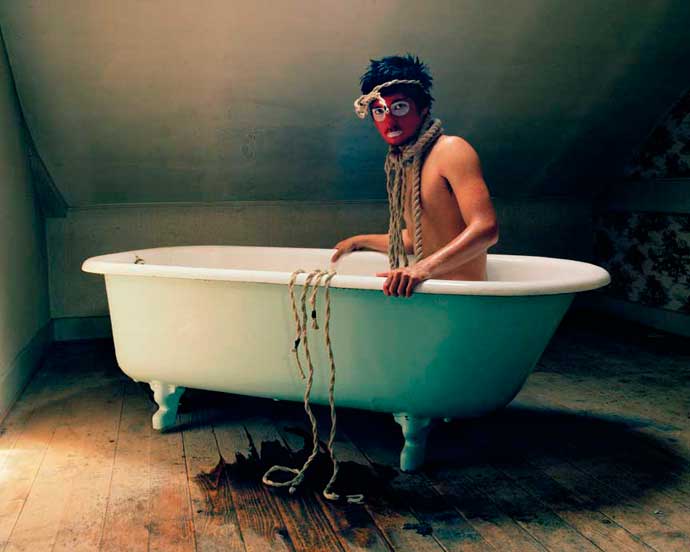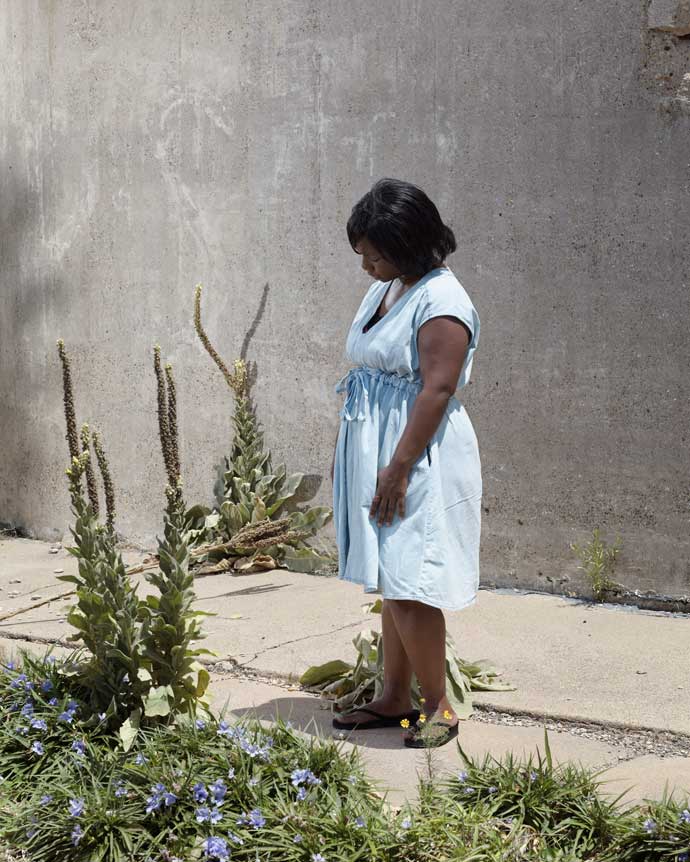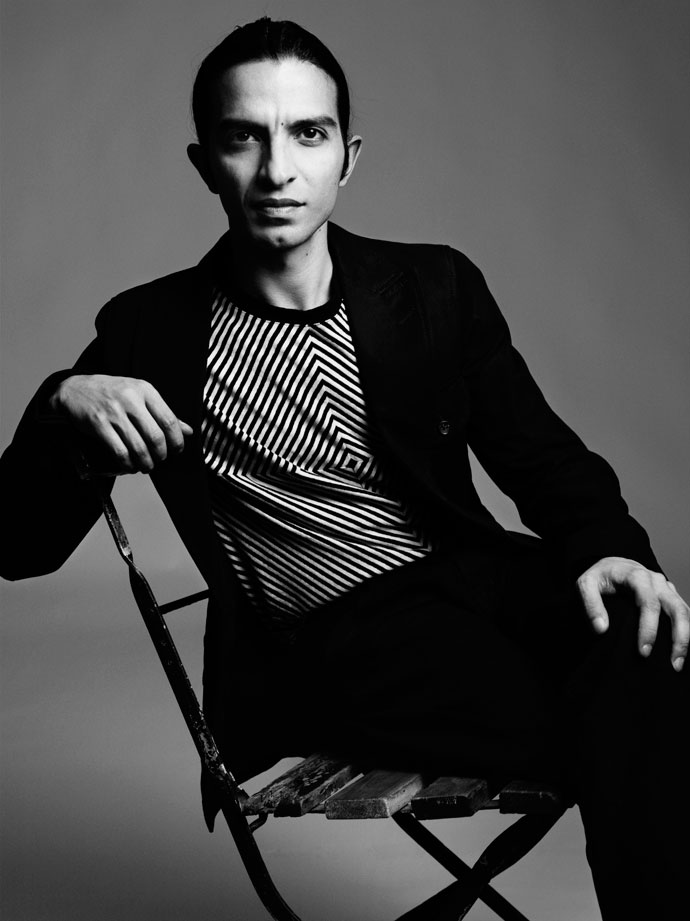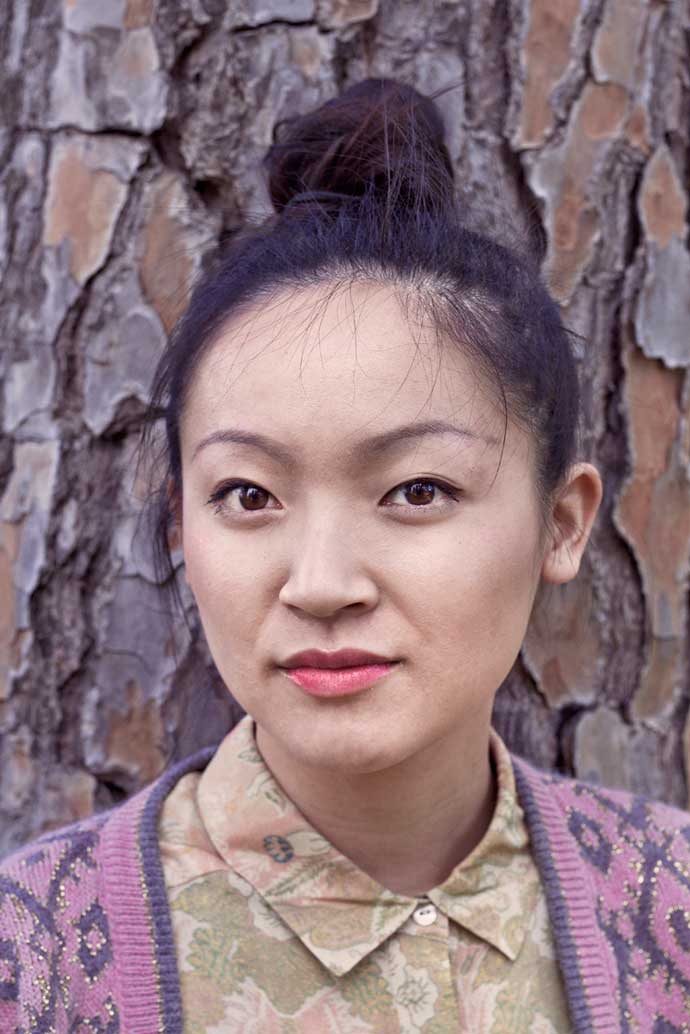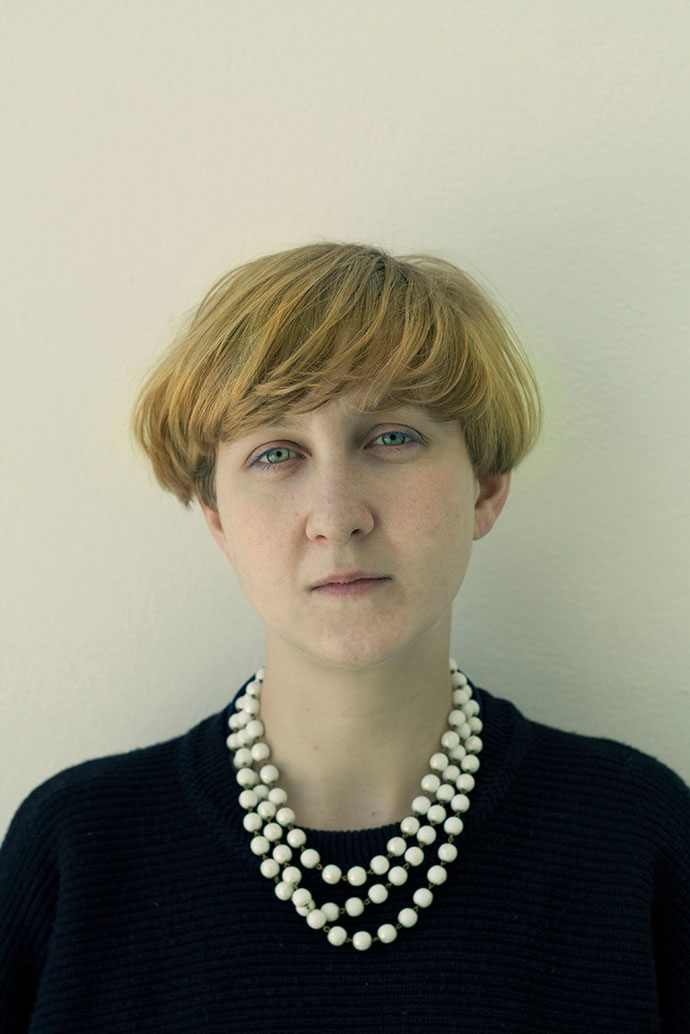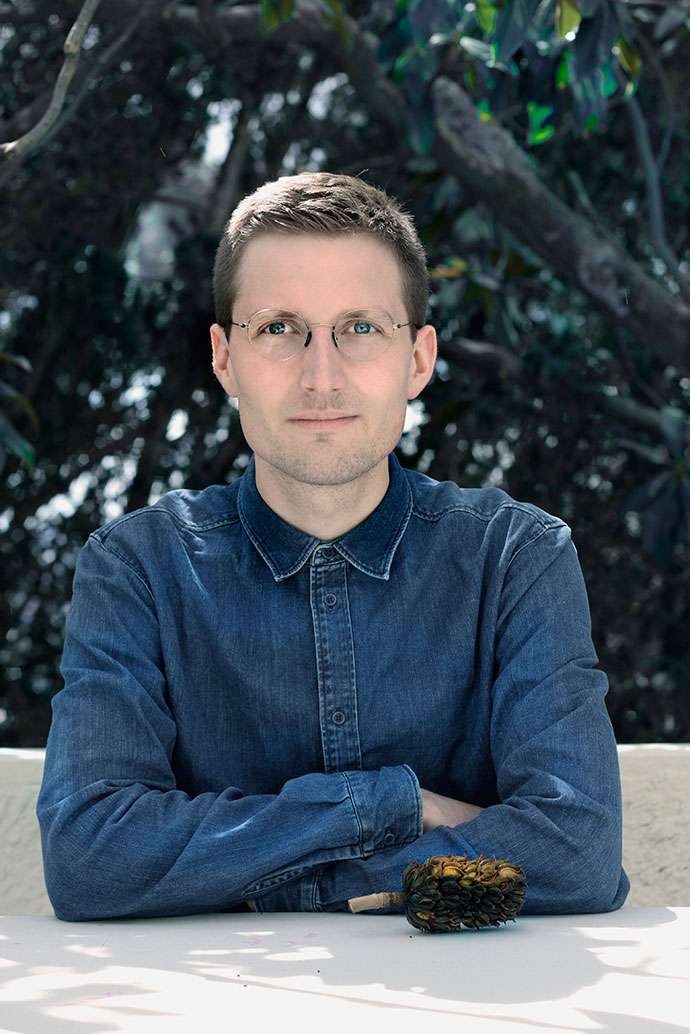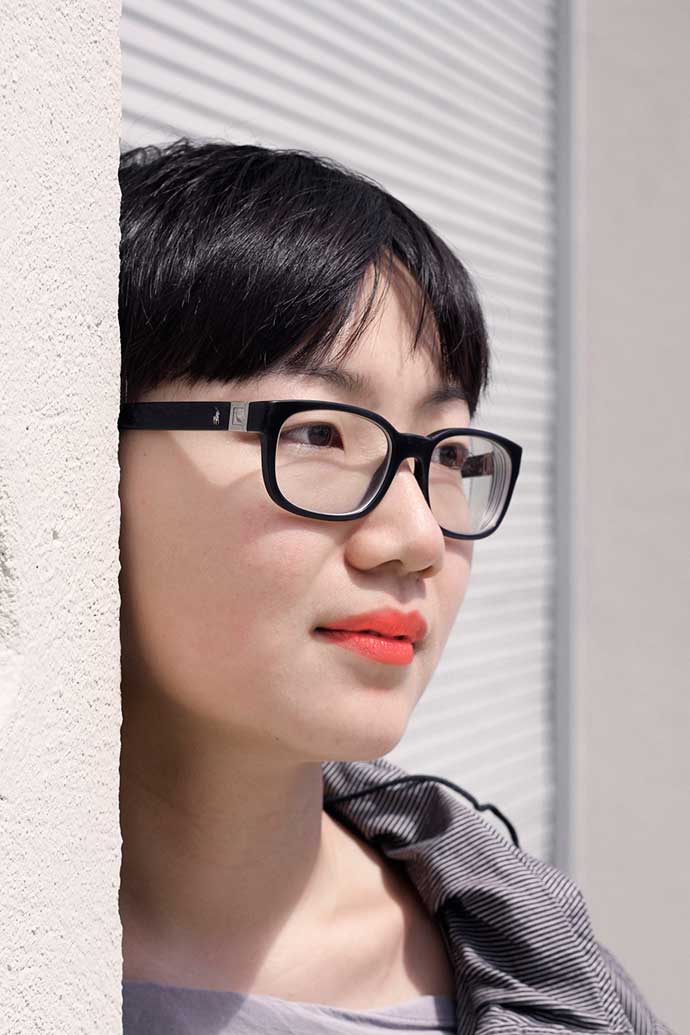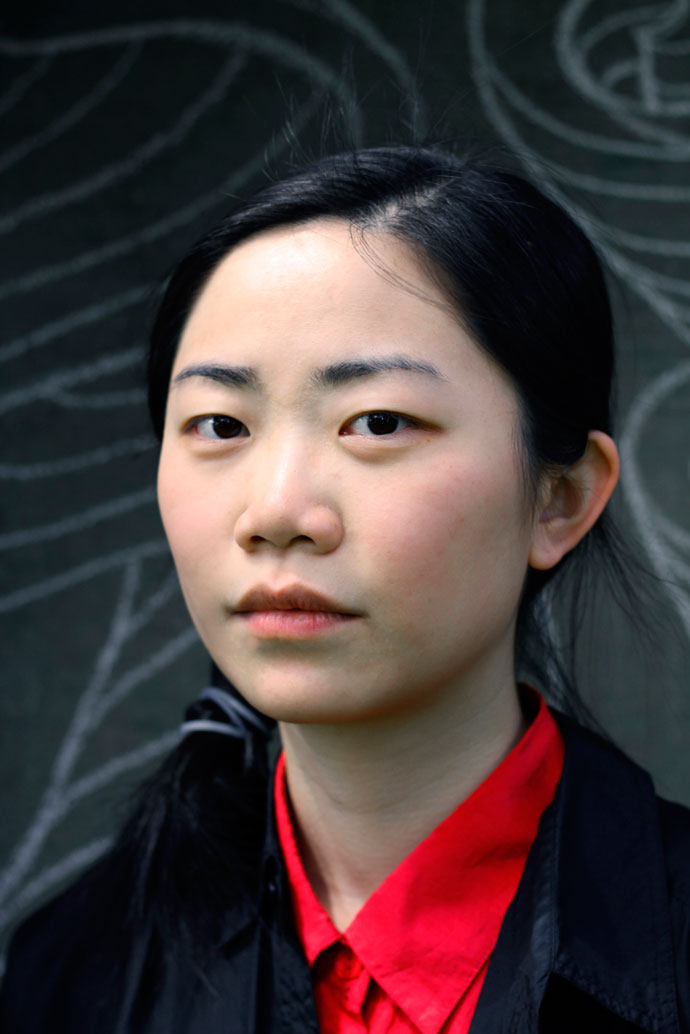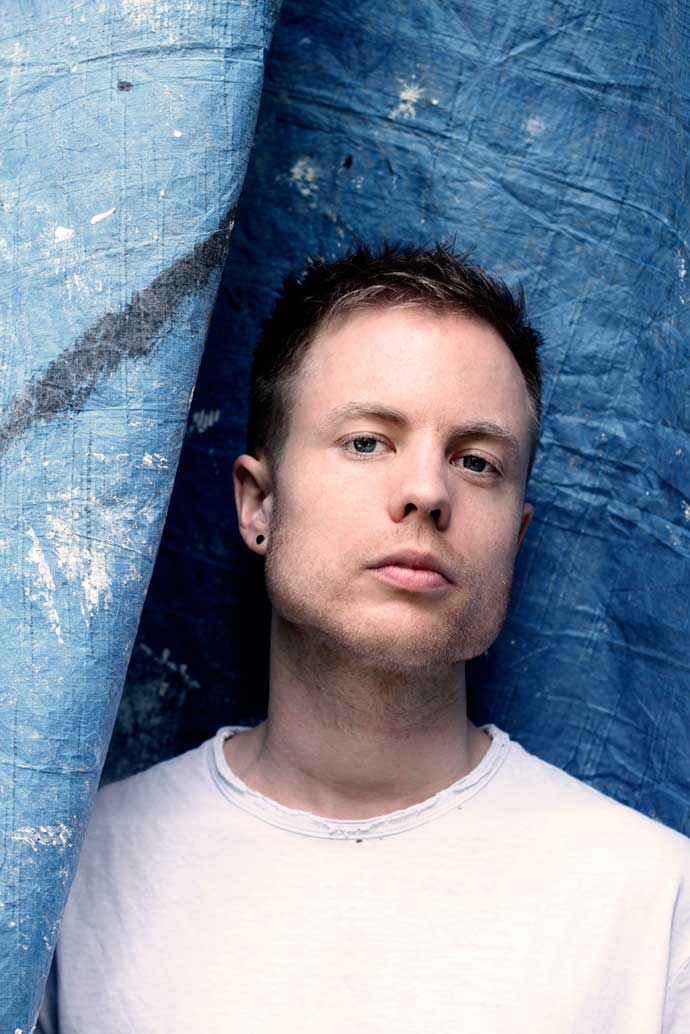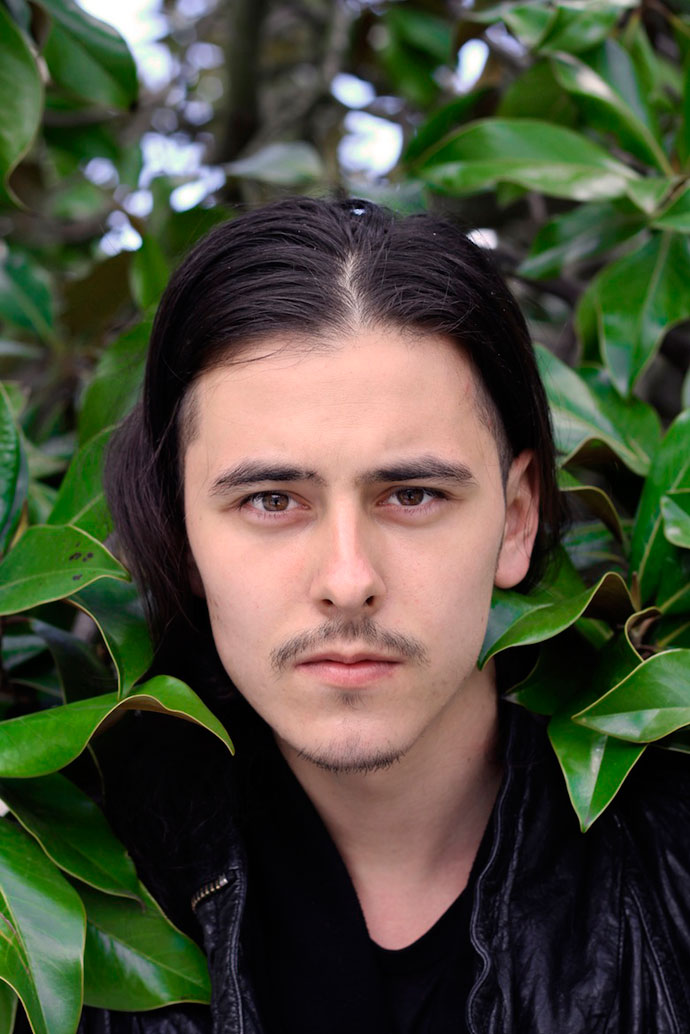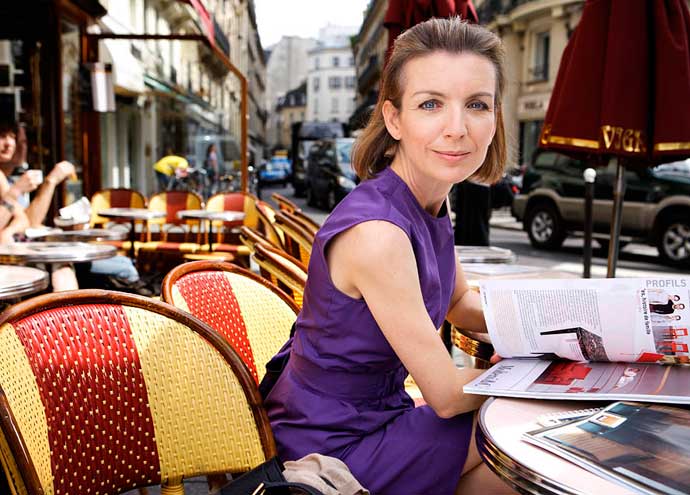-

MULATU ASTATKE: the bushes vs Debussy
-It may have taken decades, but the Ethio-Jazz sounds of Mulatu Astatke are now traveling throughout the world, through Kanye West samples and Jim Jarmusch films, reaching unlikely destinations such as the ecstatic crowds of Calvi On The Rocks in Corsica.
‘Doctor’ Mulatu Astatke as he likes to remind us, is not only a jazzman, but a doctor in musicology, who is eager to add to the lists of achievements of his home country, Ethiopia: coffee, inspiration to the Rastafarian faith, the invention of the musical scale, and it would seem, music conducting.
The bushes. Debussy. In the the mouth of Mulatu Astatke, it’s hard to hear the difference between the two.
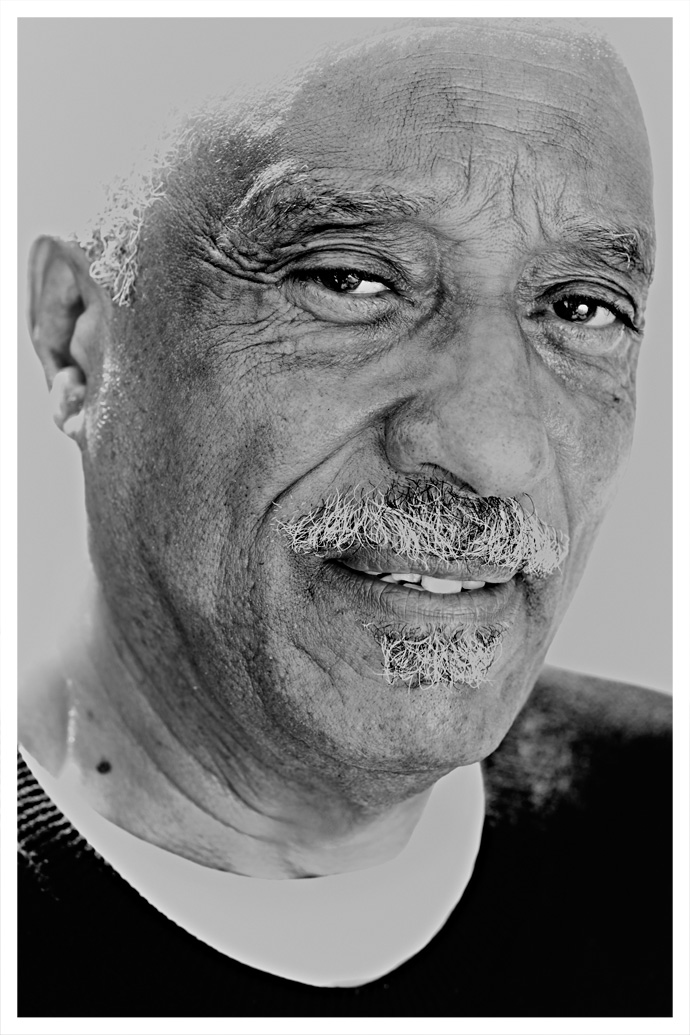
Doctor Mulatu Astatke, "Father of Ethio-Jazz" as his business Card states. Calvi 2013. Photography by René Habermacher.
René Habermacher: How did you come to be part of this festival that is very electronic music related?
Mulatu Astatke: Well, you know, I’ve travelled to Europe a lot in the last 3-4 years. The band became very popular, very busy and we did also a completely beautiful cd which will be coming out in October for the Jazz Village. People seem to ask for my band everywhere.
I used to be involved with electronic music a few years back with Heliocentrics on the album “Inspiration Information” (2009). But I really love acoustic sounds very much: real sounds, real music, everything. It’s good for the people to be able to get both sides, they can hear the acoustic but also the electronic music. I think it’s a very good idea to bring me to this type of festival. It’s great.
RH: How do you feel about the younger generation of pop musicians referring to your sound or even sampling, as in the case of Kanye West and other heavyweights of the contemporary pop generation?
MA: I remember the film “The Broken Flowers” by Jim Jarmusch, with Sharon Stone and Bill Murray. (NB- The soundtrack to the film features an eclectic mix of music, chiefly using instrumentals by Mulatu Astatke as the main score mixed with garage rock, metal and reggae.) The film really made a push and brought different crowds to my audience.
Then people started sampling my music. So my audience keeps on growing. I love it, I have no objection to sampling my music, because every time they sample, the crowds come too.I see all kind of people in London, in Paris, in Australia, everywhere, middle-aged, young, old ages, all kinds of crowd. It helps Ethio-jazz, and also for people to see different directions of music. So it helps so much. I enjoy it. Its beautiful.
Mulatu with drum sticks shortly before going on stage. The composer’s own signature instrument is the vibraphone, a set of graduated aluminum percussion bars that resemble a marimba or a xylophone. Photography by René Habermacher
RH: Ethiopian culture pioneered a lot of different things in music. Your work is part of that tradition.
Do you think because you were so pioneering it took quite some time for the deserved recognition to come in?MA: I put myself as an example and always say: never give up, just keep on pushing!
It’s so great when reality reaches what I always dreamed for this music to reach. If you just get to this point… it took me around 43 years!
The thing which takes time always give great results. It is what it is: as a musician you come to Paris, play Ethio-jazz, you go to NYC, to Germany, Denmark, Sweden, England: playing Ethio jazz.
And then suddenly this music just develops. Its a great recognition.I got my PhD from Berklee (NB – Boston, USA) and lectured in different universities all the time. It’s a great achievement for Ethio-jazz to be accepted at Berklee, a recognition of what we have given to the development of modern music, to dance and everything to the world. So I said: it’s not only for Mulatu, but this is a recognition of Africa, which is so great. So this is what we fight for.
Now I also do a lot of research at Harvard, at MIT and also lecturing for National Geography last month at the Royal Albert hall in London about Ethiopian contribution to culture and music.
I talk about African achievements and what it has given to the worldRH: So the theoretical reflection is very important for you.
MA: Very much! If you don’t know the historical aspect and the contribution of your country’s music, you can’t go any further.
The more you know, the more you do research, the more you enjoy.And the more you can develop the music and show to the world your own contribution.
So research is very important. For example in Ethiopia I go to the rural areas, to the bushes.
There’s one tribe, the Dirashe, who plays a diminishing scale in the middle of a pentatonic five tone scale country like Ethiopia.
In Ethiopia we play only five notes, that’s how Ethio-jazz developed: five notes against the twelve tone scale of American Jazz, you know what I mean. When I studied at Berklee, they were teaching us how Charlie Parker created the modern jazz through diminished scale. But this tribe plays a diminished scale. And great composers like Debussy are on a diminished scale. So what is really very interesting is these tribes have been there for centuries and centuries, so what I want to know is: is it Charlie Parker, was it Debussy, or this tribe ?Who was first? This is the question. These tribes people knew nothing, no painting, nothing, and they play diminished scale. I don’t know how they got it, because they are in the middle of a five note country. How did they manage to get this?
So I raised this question at Berklee and they were so surprised. What they said is: “Oh Mulatu- you got us!”
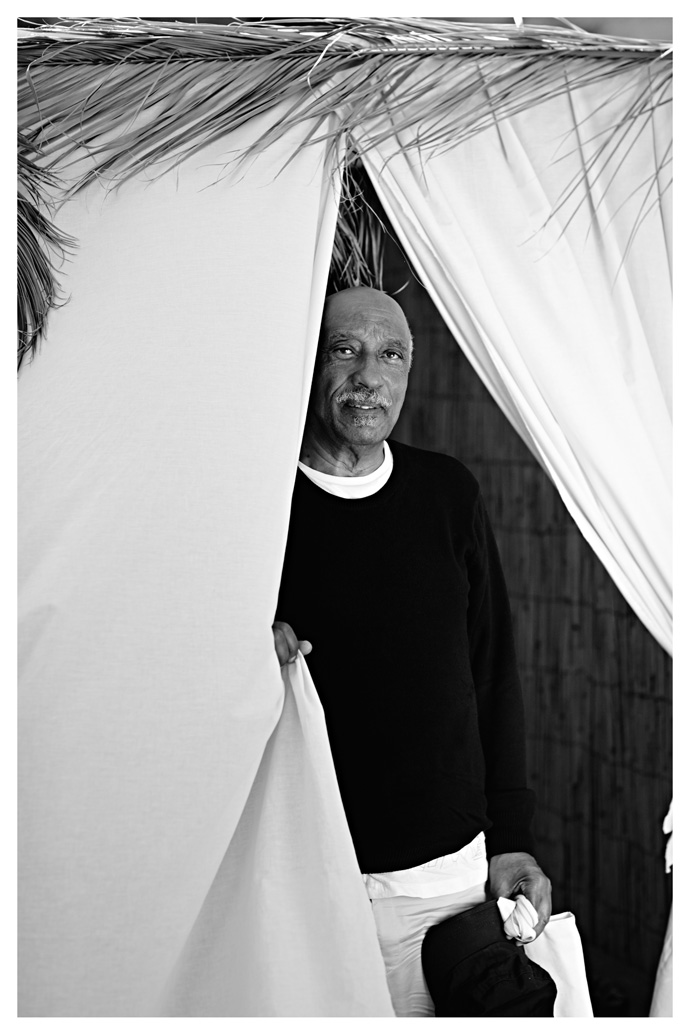 Mulatu Astatke received late recognition: Originally supposed to become an aeronautical engineer he was
the first African student in the late 1950s at Berklee College of Music — “the only place in that time,”
he said, to study jazz. Photography by René Habermacher.
Mulatu Astatke received late recognition: Originally supposed to become an aeronautical engineer he was
the first African student in the late 1950s at Berklee College of Music — “the only place in that time,”
he said, to study jazz. Photography by René Habermacher.RH: Is there a point where you thought the recognition is starting to come?
where you though somebody starts to understand what you were trying to do with Ethio-jazz?MA: In Europe and America, they understand and love my composition all the same. But when I went back from NY to Ethiopia, they didn’t like it at all, because they were used to this musical form that we call the current form: malalala…dalala (sings) I remember a long time ago there was a town that told me to get off stage. It was too complicated to them. They could not understand: “is this a joke or what is it?” Playing around: wabadawadawa?” – they don’t dig it. So I finished the piece and went off.
But now, after 10-15, 20 years they go crazy. The whole town of Addis is Ethio-jazz now.
Finally it’s Ethiopians! So I always say: keep on fighting, never stop. That’s the result.RH: When you worked with those tribes on interpretations, did they have any rejection?
MA: No. You know, I don’t touch them. I just work behind whatever is going on. I can write beautiful counterpoints and harmonies and they do their thing. I just tell them how good they are. What they’ve done to modern music, their contribution to the world. So they love it.
I do a lot of experimental work with this people. I do beautiful jazz fusions with them.
(NB- Mulatu once brought musicians from four different tribes together in an Addis Ababa television studio and orchestrated a cross-tribal fusion performance. This giving traditional musicians, many of them farmers, an artistic exposure beyond their tribes)
The ideal way to explore multiple forms of music is through jazz.
In fact there is a Dirashe track is on my new album, and another one with the Surma tribe.
It’s so interesting, I did an experiment with Fatou (NB- Fatoumata Diawara), the Malian singer who is featured in one song,
a fusion of their music with Ethiopian: east meet west. It’s so beautiful, its on my new album called “Sketches of Ethiopia”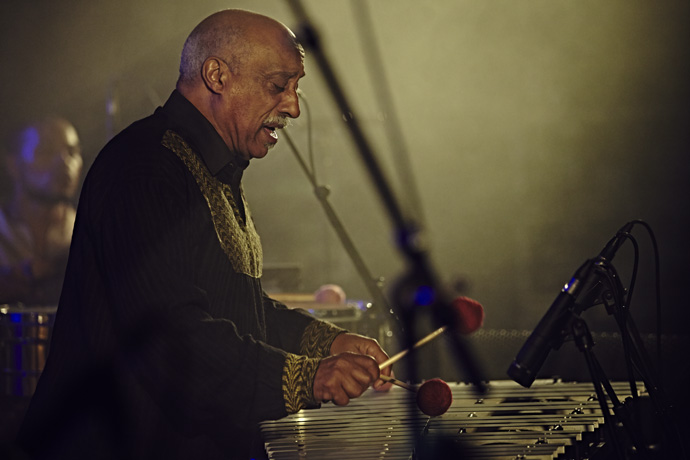
Mulatu in action at Calvi On The Rocks, Corsica 2013. Photography by René Habermacher
RH: Another culture that strongly relates to Ethiopian heritage is the reggae culture, yet in a very different way.
How is your relationship to this?MA: I really respect them for introducing the Ethiopian, the flags and their love to Ethiopia.
But even though musically we’re in different modes, different scales, different things. When you hear Bob (Marley) and the other ones they use mostly their own stuff.
So actually its not like Ethiopian culture or Ethiopian music, but this is their own way of appreciating music. I like them for promoting our country, for promoting our flag in this world, and for it to become like part of national art. We enjoy them, we love them so much! And now, you see they are adding a lot of Ethiopian modes, Ethiopian scales to reggae currently. There are rastas living in Ethiopia in a place called Shashamane.
Hailee Selassie gave them the land in 1948, so they stay there. And now they start to come into our music: Ethio reggae you know.
But now there are more young Ethiopian musicians, they do a lot of reggae. It’s great I think.RH: In 2008 you premiered a portion of the Saint Yared opera at Harvard.
Are you continuing on that project?(NB- The Saint Yared Opera is a project on Saint Yared who is regarded as a saint of the Ethiopian Orthodox Church and credited founder of the Ethiopian Coptic Church Music. He is believed to have been the first to write musical notes, centuries ahead of Western civilisation, and use an ancient form of conducting stick. The composition of the opera will blend the old and the new, and incorporate traditional chant texts in Ge’ez, the Ethiopian liturgical language, but as well electronic elements)
MA: Oh yeah. Thats very interesting. It’s gona be completed very soon. It’s already done actually.
The problem is that l am so busy travelling with other projects: I write for films, I do my experimental works.
I need two to three months to finally put the opera on a stage.This is a work I’ve done at Harvard.
My paper was about conducting being an Ethiopian contribution to the world.
We used to conduct music in the 6th century, with a stick called a mekwamia.Mulatu at Calvi On The Rocks, Corsica 2013. Photography by René Habermacher
So I studied the movement. If you look at the military band march, and the man in front waving sticks and things — 80-90% of that movement is from the mekwamia in Ethiopia.
But where did they get this from? This was before existence of symphony or conducting a symphony — and we have it. If you look inside the Encyclopedia, were there symphony orchestrae in the 6th century? There weren’t.So I said “OK, there were no symphonies, so then the conducting movement is taken from us.” Of course there were a lot of conducting, there were choirs in Europe of all kind.
But the most of the movement is what they use for the military also. If you use in the symphony a stick like this, the way you move it is exactly the same how we move it.
So they are telling us “you can do your reggae, you can do your jazz, you can do your rap.”
But they say classic music is purely European culture, which Africa has nothing to do with.
They are musicologists for Harvard, Yale, Princeton – so I said:
“look, I am open minded. This is what I found. If i am wrong, tell me, I am learning from you.”They couldn’t answer me.
So I say: “one for Ethiopia”. They said: “we’ll see.”[In the opera] there are two great conductors in the symphony, one european with a bow tie, conducting the symphony behind, and a church guy that conducts the choirs.
My dream is to do it in Lalibela (NB- one of Ethiopia’s holiest cities, famous for its monolithic rock-cut churches), the cave.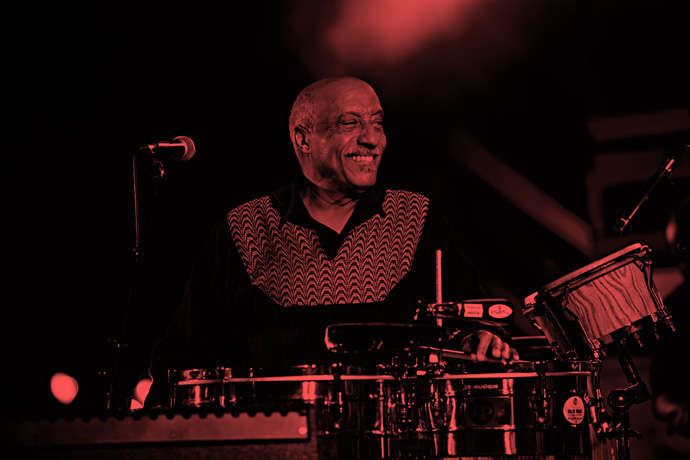
Mulatu at Calvi On The Rocks, Corsica 2013. In the late 1960s he had returned to Ethiopia with the first Hammond Organ and Vibraphones. Photography by René Habermacher
RH: What is the last thing that stimulated you?
MA: That’s really these people in the bushes. They inspire me so much. I have very great respect for them. The more you go closer to them the more you find them so interesting. They have created so many great musical instruments.
Now there are instruments in the bushes they sound like trumpets but made from bamboo. Strings, sound like violins, cellos, that kind of thing.
So I was wondering, let’s do a research – who inspired who ?
When you see these people never had a chance to go anywhere, they have no television, they have no radio, – they have nothing.So I always think they inspire the developing world. Those are the people that inspire me. The more you go everyday, you learn something.
New ideas, something interesting from those people. They inspire me.We call them backwards. But they’re not backwards people to me, they are advanced people.
They are ahead. So this this is my life now. I listen to them.
Whenever I have the chance I am in the bushes, I go close to them.
It’s so interesting, so beautiful. That is what inspires me truly.
Upcoming concert dates:
AUGUST 10 – Paris, Trianon00 -

Kostas Murkudis
-Putting Kostas Murkudis, with his East German utilitarian approach, at the helm of Closed jeans, a brand defined by the relationship between function and form, is a match in heaven, in a time where the initial idea of fashion is caught between mass production and the arbitrary grip of luxury-obsessed conglomerates.
They each bring their own interesting history and their associations to big names to a collaboration very much anchored in the “now” – on one side, Marithé and François Girbaud, who founded Closed in the 70’s, and on the other, Helmut Lang, with whom Murkudis worked during the label’s early and formative years, though both brand and designer exist in their own right.
For women’s fashion week in September, Closed will open its first flagship store in Paris.
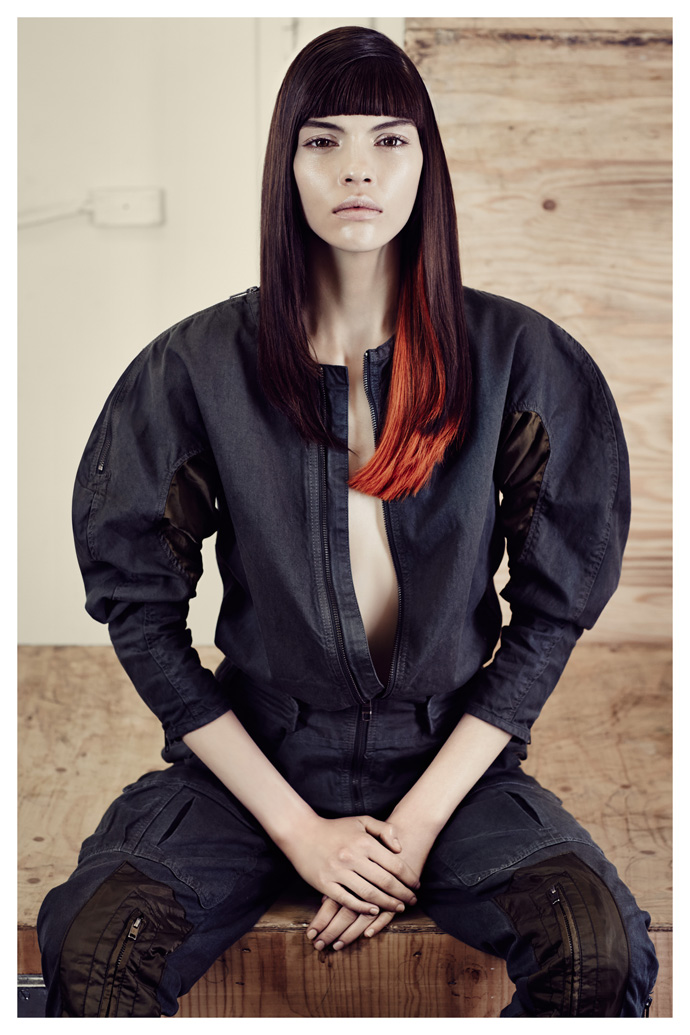
Overall "Illusion" from the FW 13/14 collection by Kostas Murkudis for Closed Jeans. Photography by René Habermacher
René Habermacher: When I heard you’d be working for Closed jeans, I thought it made great sense with your approach – sustainability, resistance, utilitarianism and uniformity are expressions that come to mind when thinking of your work, and all of these seem to be relevant in the context of jeanswear.
KM: I grew up in the DDR (German Democratic Republic), in East Germany, so these are surely aspects of my work that I value and are part of my professional ethos that I will follow up into the future. It’s my contribution, to make it accessible to more people than for example with my own brand.
I always had “two hearts beating in my chest”: one more poetic, free of necessities, and the other that is more about durability and functionality everyday. I always loved the approach of the Bauhaus, it is very important to me. But I really do love both aspects. Now with my new mission at Closed, I can really apply everything you described, I have all tools and a fantastic team I love working with.
For me this is the perfect balance between the two brands.Whereas with my own brand, my mini-label that I call my laboratory, I don’t have to think about whether the piece is really durable, has the right pocket or whatever. I just can do projects important to me, which do not necessarily have anything to do with fashion. For example recently I have worked with a royal glass manufactory in Munich, Lobmeyr, that usually do stuff like church windows etc. I think there are so many possibilities and I am very curious for new challenges.

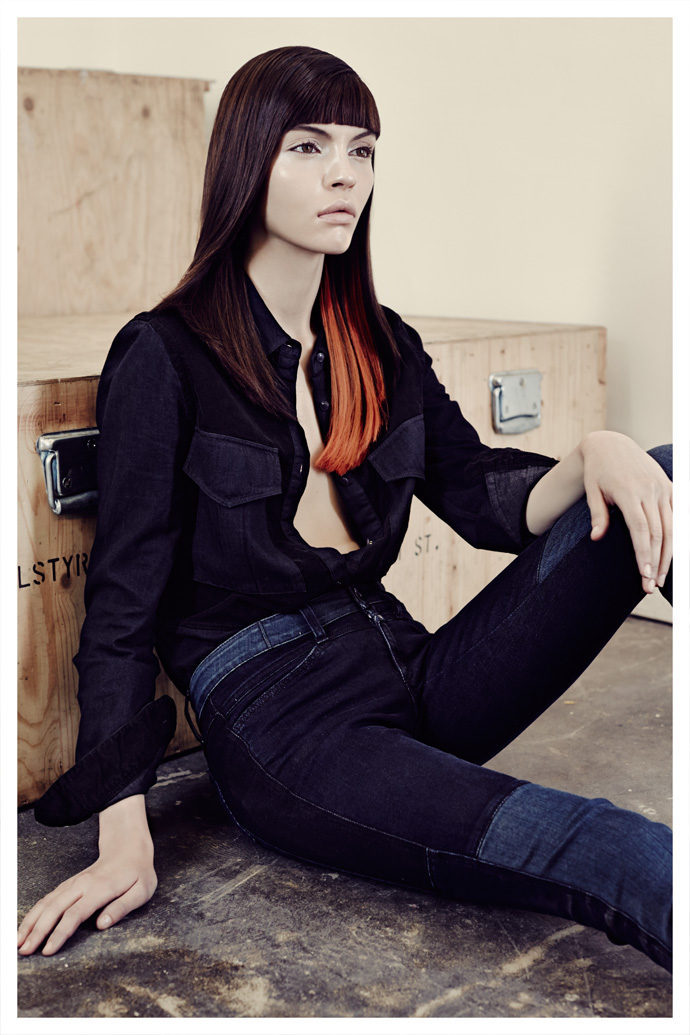
Shirt and Jeans FW 13/14 Kostas Murkudis for Closed. Photography by René Habermacher
RH: You’re working for quite some time in fashion now. When you started, fashion was something different: in the 90’s, fashion still had a socio-cultural context, was a compass and expressive part of movements. Today it’s different, its not really that a social movement expresses anything through dressing codes.
KM: That’s true and has obviously social, socio-political, and sociological causes. There is very little happening that could tempt for re-orientation. I do really hope that finally something will be happening. Or has it started already? When you look what is going on in Brasil, or Turkey, in countries where I would not have expected that this kind of movement would be surfacing.
The situations in Greece, Portugal or Spain, France and possibly soon England, don’t look so great either, but something is happening and I am hoping very much that this will spread across cultures and regions, and maybe create the necessity to develop new codes. Obviously they have to develop themselves, we as designers can’t help it.
RH: For quite a while fashion hasn’t had a cultural value of progress, it has become more a simple “garment industry.”
KM: That’s right. Fashion is not allowed to be like this anymore. It’s the very capitalist approach to define success only through growth, to which the big houses are forced to: generating work, circulate money, this and that – it’s not about content at all. In fact it is even arbitrary who designs. It is the brand with its margin that is in focus.
If that’s what’s thriving in society, fashion can only be its image.On the other hand, design has become another aspect – let’s take an example like the iPod, or the iPhone and what has been generated here: a simplicity, practicability and a beauty of objects that have not been produced like this in a while.
It’s not about developing funky variants and decorations, but to work continuously on refinement and improvement with every generation, which I believe impacts our everyday culture. Even kids are not seduced to just buy something new because there are some new crazy buttons added. And you don’t have the desire to buy a jeans with 25 embroideries and absurd stitchings on the butt that are completely pointless. This pointlessness, this battle of material is not working anymore.
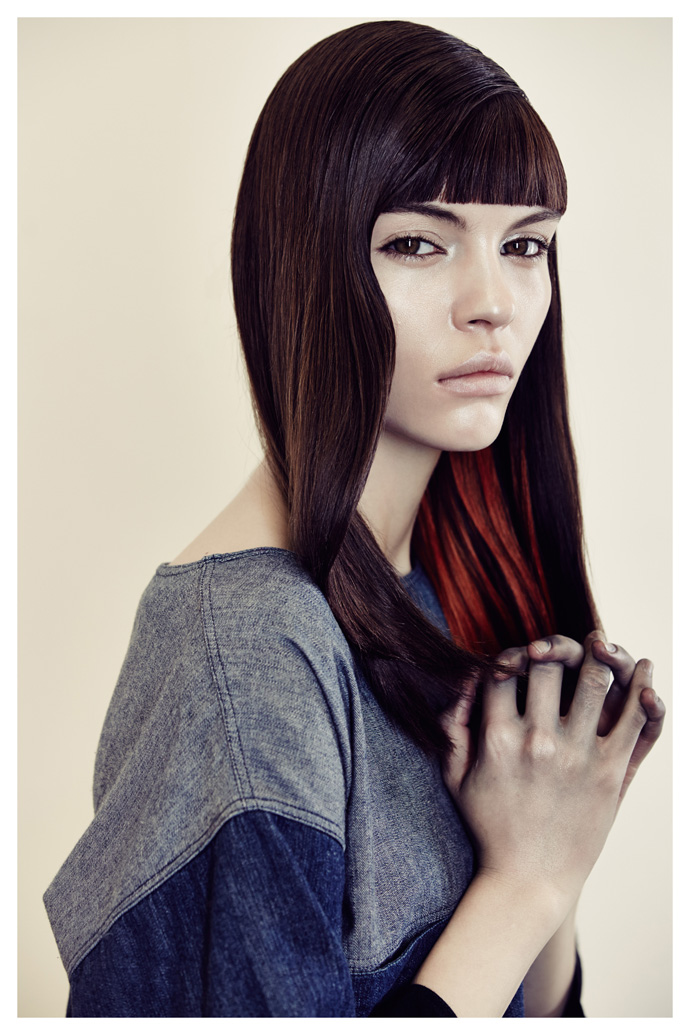
Jeans dress FW 13/14 Kostas Murkudis for Closed. Photography by René Habermacher „First there is nothing, then a deep void and finally a blue depth.“
Yves Klein.(Leitmotif for the colour codes to the SKYWALK CAPSULE COLLECTION No.1)
For example my brother Andreas, who owns a concept store in Berlin, he affords himself the luxury to buy only what he thinks is really good, regardless of the label. He buys what is up-to-date in his eyes. He was totally shocked about the pricing for which it’s possible to get good design that is on top politically correct produced in Italy: good quality fondly fabricated from great fabric. Not that this is world changing…
RH: But democratic?
KM: Democratic in a positive way. I didn’t really want to use that word. When my brother saw the Skywalk Capsule Collection in Berlin, he went to order straight away several looks from the FW collection, saying: “wow, this is really cheap- and so cool, but really cheap”.
Of course we have the same approach, maybe also because we grew up in the DDR: for us longevity or functionality and beauty don’t have to cancel each other out.RH: What is your relationship to glamour?
KM: I try to stay remote, but sometimes have to make compromises. My relationship is rather an aversion. I come from a very simple background and it really does not touch me to hear “who was where with who wearing what”, that doesn’t interest me.
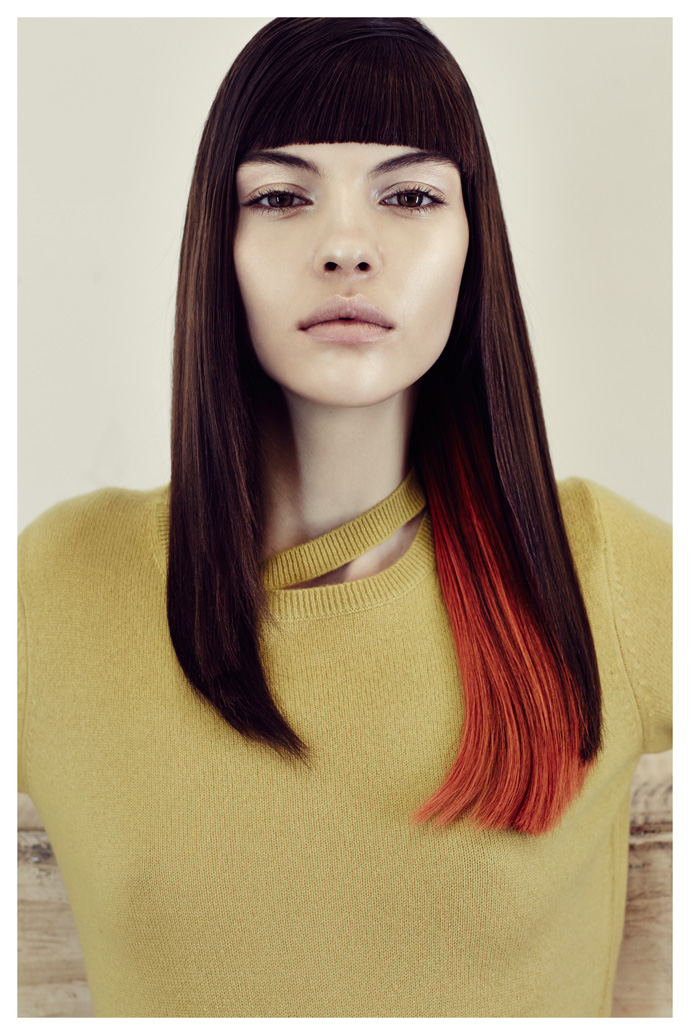
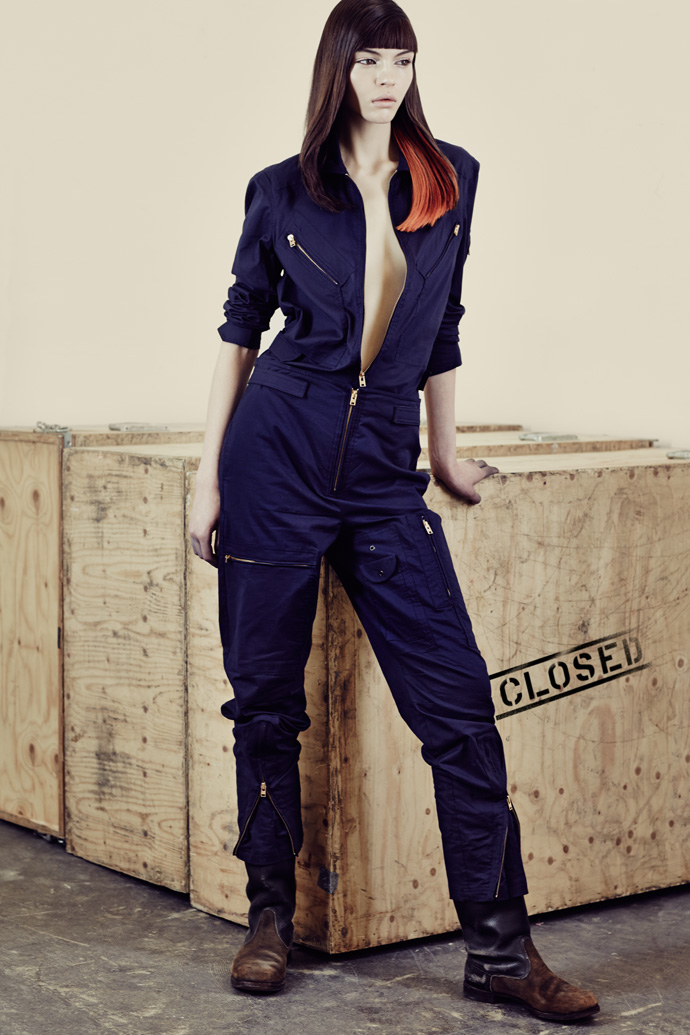
Right Side two pieces from the SKYWALK CAPSULE COLLECTION: Murkudis took inspiration from a vintage aviator suit, using the cuts and details to create a minimal wardrobe: a shirt, a blouson and pants for men and women. Boots: vintage DDR army. Photography by René Habermacher
„Earth is a delicate shade of blue“
Yuri Gagarin (Leitmotif for the colour codes to the SKYWALK CAPSULE COLLECTION No.1)
RH: Tell me a little more about the Skywalk Capsule Collection…
KM: The idea was based on the desire to bring the brand back to an international level, and the one of the brands defining aspects: the idea of unisex, that I thought very interesting and gave me also the possibility to explore menswear more, find a different angle and define their image more sharply.
Because the project was a very small range, I had to stay quite precise as well in material as colour and design, but it was the first time that I had the chance to show pieces that one actually can afford. If you look at the product, it appears at first sight quite minimal, even though its technology is actually very complex, which is something I wanted to put forward as well.
But because of all this, it was quite obvious to me to give the collection somewhat of a poetic moment.
RH: Yet here is also a practical thought behind it?
KM: Of course. It was to show the brand’s core, and a product that should function in the everyday life over long time.
Apart from that, the beauty of a product becomes apparent in its use, becomes part of our lives and our bodies. That’s what makes a jeans. It only becomes your jeans, and a great one, when it deforms on your own body, through use, through touch, through creases, through whatever. It becomes part of your being. That makes it truly beautiful when it is beautiful.
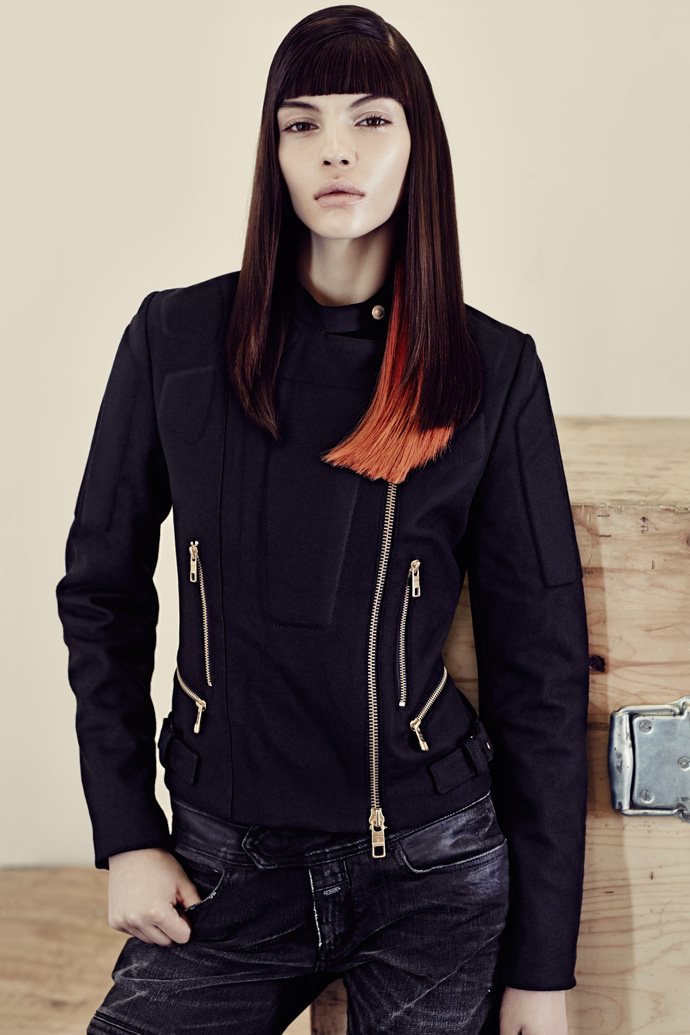
Felt Perfecto Jacket and Jeans, both FW 13/14 Costas Murkudis for Closed. Photography by René Habermacher
RH: With a clientele living in the most various meteorological conditions, does it really make sense today to produce season-oriented collections?
KM: This is a totally legitimate question. Also as we know that the big producers often deliver new products up to twelve times a year.
So for smaller brands it is indeed worth considering to orient themselves differently because they have no chance to stand up against this moloch of an industry.In a way we are overtaking ourselves with everything: when the sales start the season hasn’t even really begun, there is a resort collection, a pre-collection and a in-between collection- that is all a bit absurd. I see that with my brother, who says “I don’t need a pre-collection that is delivered in November when its perhaps snowing here and -30 celsius”. That makes no sense.
On the other side I am bound to the cycles of the classic way of producing 4 collections a year.
I think the problematics are there for everyone, but no one has yet found an ultimate solution, or takes the risk to say ‘I am going to position myself entirely new in this context.’RH: In your case do you do a presentation, or are you considering eventually a show?
KM: Right now this is not a real topic for us. Maybe next year or after that, it really depends on how we develop and what our expansion will bring.
RH: The one thing I find puzzling is with all the coverage on the shows, once the products are in the shops, you are already bored of them.
KM: I totally agree with you that three weeks after the shows you vaguely remember and when the products are delivered to the shops you practically forgot about it all. This wish and desire to own the pieces immediately is fading in that period.
But that’s what you have Zara for: they deliver within three weeks after the show a dampened version for those who can’t wait at all and never really got it anyway: those will buy the cheap copy (laughs).
By then the others just saw the newest collections and are wondering that they have ever liked the current one…. I look at this smiling.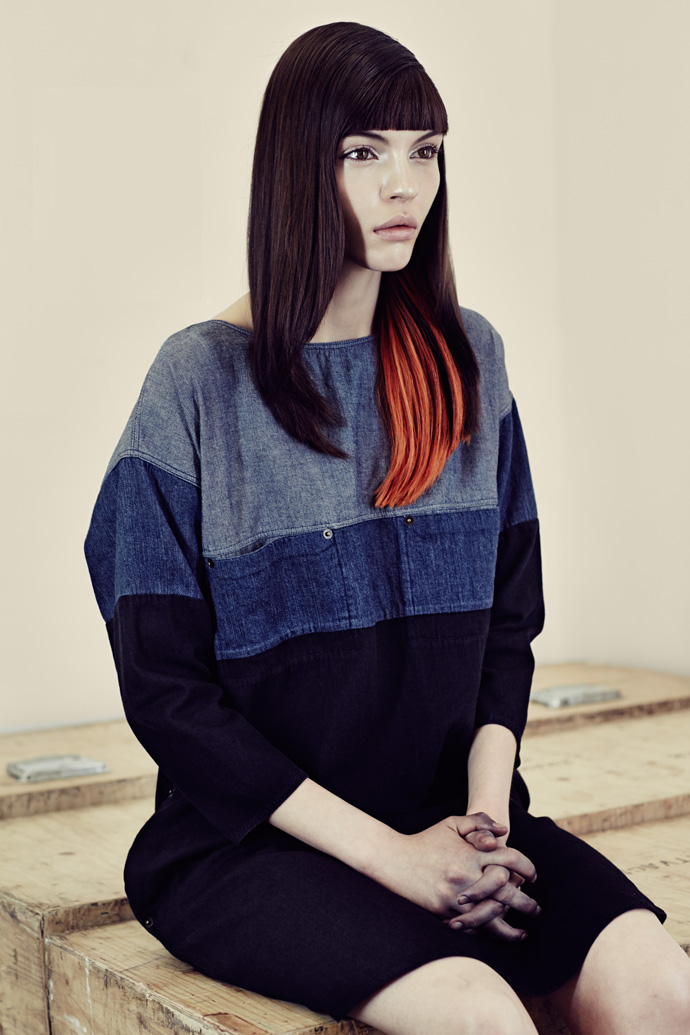
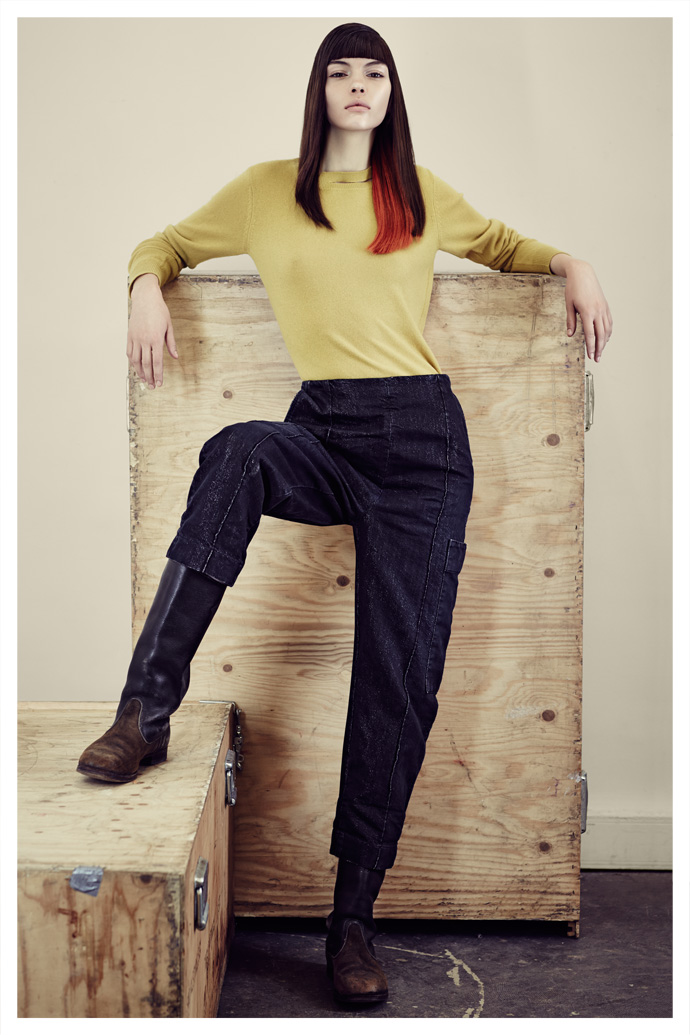
Left: Jeans dress, Right: Split neck pullover and Jeans, all FW 13/14 Kostas Murkudis for Closed. Boots: vintage DDR army. Photography by René Habermacher
RH: You do have a special relationship with Japan, is that right?
KM: Yes, when I was a small kid, I started to do judo. I had a fantastic teacher that I absolutely worshipped as a living hero.
I was excited to wear these suits, the belts. The scent of the mats, the bows, this outlandish language had fascinated me. To me it was of course an escape from my Greek moulded DDR prosaicness and the pressure to perform. I did virtually absorb all these words, ceremonies and preserve within for years.When I started to be interested in the arts I read a biography of Yves Klein, and realised he was a judo master like me, and eventually lived in Japan. I think his work was to some degree influenced by Japanese moments, in their simplicity and splendidness. This has really accompanied me ever since. The Bauhaus would have been unthinkable without the Japanese influence. In many aspects this influence has developed with me, the desire towards the exotic but as well the austere, the sophistication and the celebrated. The handling of colours, surface but also the poetic moments and the spiritual aspects behind.
I celebrated plenty successes in Japan and grew with these, so I owe a lot to the Japanese. We found each other. I was always fascinated and excited about it, to the point that Gordon, one of the owners of Closed, and I started to take Japanese lessons.
This hunger is not satisfied yet- and will always find itself in my work again.
RH: What is the last thing that stimulated you?
KM: I was very inspired by the exhibition of Martin Kippenberger: the incredible freedom of a man in dealing with the most different tools. I have great respect for his state of mind that moved me to tears of joy. I haven’t laughed that much for a while. All my senses had been spurred through this.
This interview and photographs are a Stimuleye exclusive
interview and photography RENÉ HABERMACHER
fashion editor SUZANNE VON AICHINGER
hair JONATHAN GEIMON @ AIRPORT AGENCY using Bumble and Bumble
make up MIN KIM @ AIRPORT AGENCY
model KATE B @ NEXT MODELS
thank you VERSAE VANNI @ NEXT PARIS
and LIBRAIRIE Ofr PARIS for your support -

valli mythologies
-The Stimuleye presents a new film for Giambattista Valli’s fifth haute couture collection for Fall 2013, following last season’s Jonas Mekas-influenced film The Other Side of Paradise.
This season, the themes are goddesses, fine porcelain and… Lee Radziwill makes a sublime and subliminal appearance.
-

monsieur hervé: ready to wear campaign
-“The story of the bandage dress is important as a fact my work storyline.”
– Hervé Leroux, AKA Monsieur Hervé LégerFor his first campaign, for the Fall/Winter 2013-14, Hervé Leroux chose to collaborate with The Stimuleye for creative direction: photographer René Habermacher in tandem with stylist and fashion muse Suzanne von Aichinger, bringing forward the modernity in Hervé’s timeless designs.
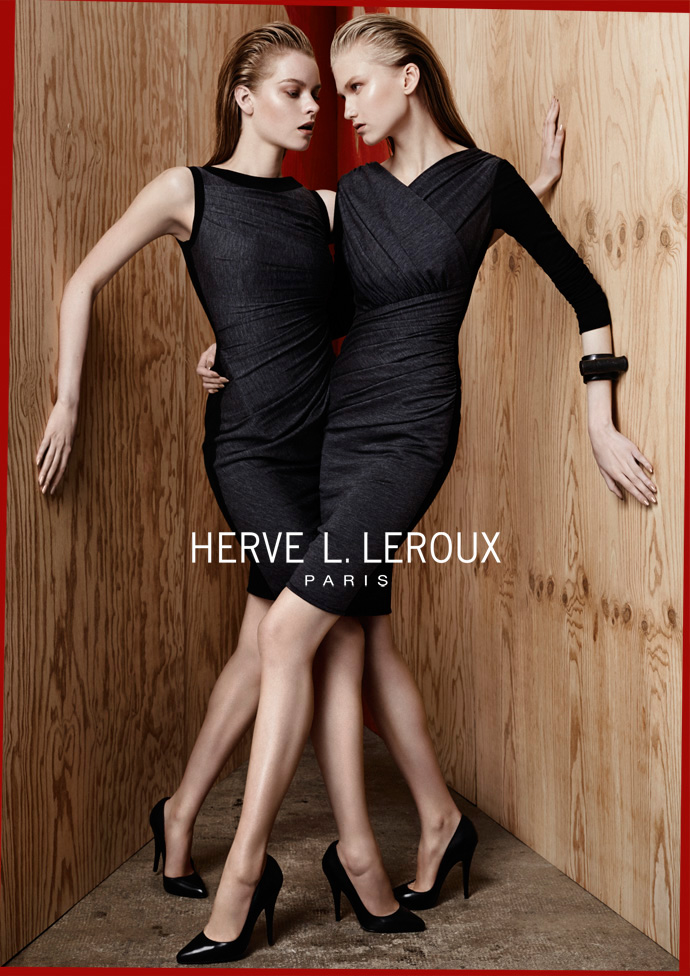 Gwen Loos and Anna Martynova intertwined in slate and black draped front dresses by Hervé Leroux FW2013.
Photography by René Habermacher
Gwen Loos and Anna Martynova intertwined in slate and black draped front dresses by Hervé Leroux FW2013.
Photography by René HabermacherAs you’ve read during our interview and couture atelier visit, Hervé Leroux, born Hervé Léger, is known for his talent for creating garments using traditional tailoring techniques while taking full advantage of developments in silhouette contraction-embracing modern fabrics.
Monsieur Hervé worked as a hairstylist and a milliner before Karl Lagerfeld offered him a collaboration with Fendi, and then Chanel, as a senior assistant. Soon after opening its doors in 1985, Maison Hervé Léger became internationally famous for pioneering the bandage dresses that were about techniques of reforming the body, focusing on the three key words for femininity: curves, waist and form. The “recipe for the 90’s”, as Suzy Menkes once wrote in the Herald Tribune, was about curve-cleaving elastic bandages and a high-octane technique that defied tradition, an effect which Hervé achieved by molding his fabric to the female form instead of draping and cutting it.
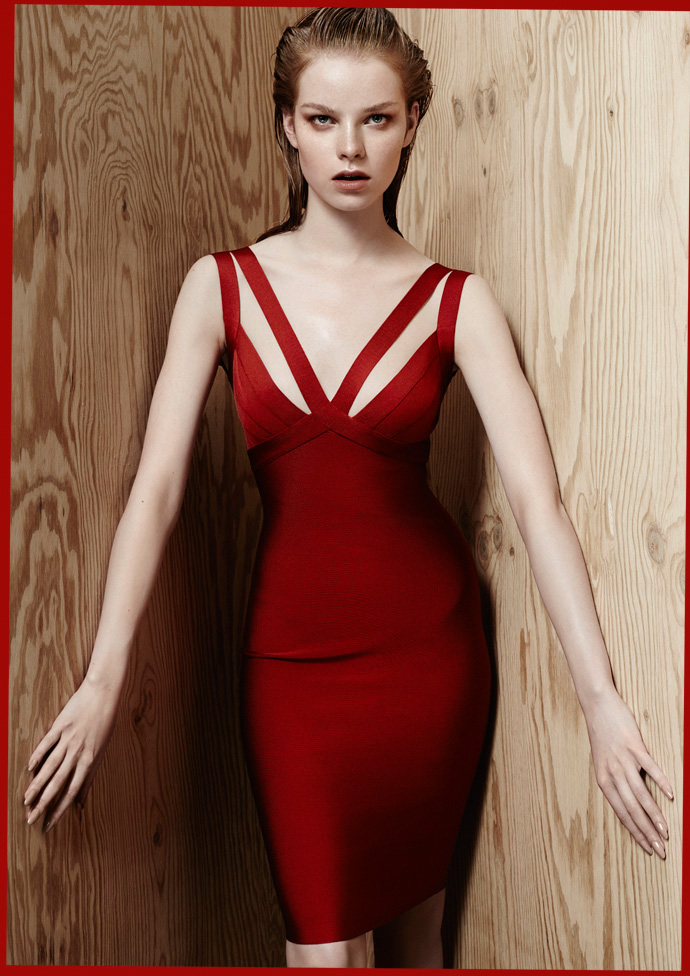
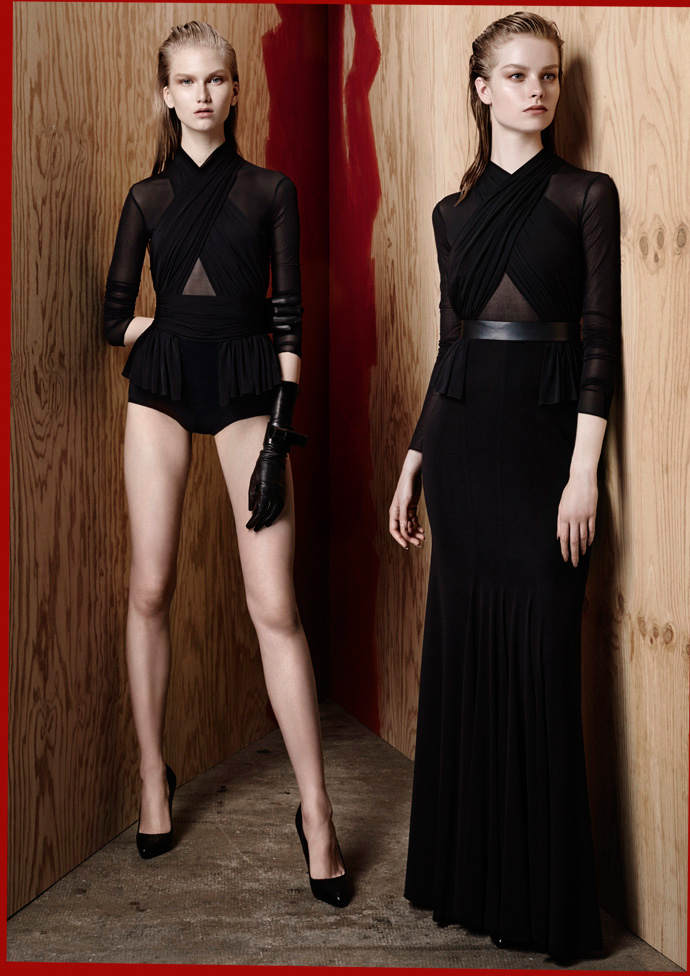 Left side: Gwen wearing a ruby deep double V-neck viscose dress recalling Hervé's iconic bandage dresses.
Right side: criss cross draped black silk jersey pieces. Photos by René Habermacher
Left side: Gwen wearing a ruby deep double V-neck viscose dress recalling Hervé's iconic bandage dresses.
Right side: criss cross draped black silk jersey pieces. Photos by René HabermacherAfter separating from the company which bears his name and adopting the name Hervé Leroux, as suggested by Karl Lagerfeld, Monsieur Hervé recalibrated his vision of glamour, towards a modern sensuality crafted by the hands of a real artisan. Every piece of both the Ready-To-Wear and the Haute Couture collections is created by Hervé’s own hands in his new atelier on 32 rue Jacob.
The Hervé Leroux Fall/Winter 2013-2014 Ready-To-Wear collection is about sober, soaring elegance, reflected on 50 hand-made pieces. For Monsieur Hervé, it is crucial that each piece be as specific and precise as a painting by Pierre Soulages, an important influence on the designer.
“It’s in doing that I can find what I am looking for.”
– Pierre SoulagesThe cut is soft, sensually embracing the female curves, revealing the secrets of the master for both of his obsessions. The fabric is draped only to create luxurious body landscapes on his monochrome canvases, paying homage to the morphology of the body.
Hervé creates a collection that can be referred to as a “second skin” – a fluid, easy-to-move silhouette, which slides on the body, becoming at once feminine and powerful.
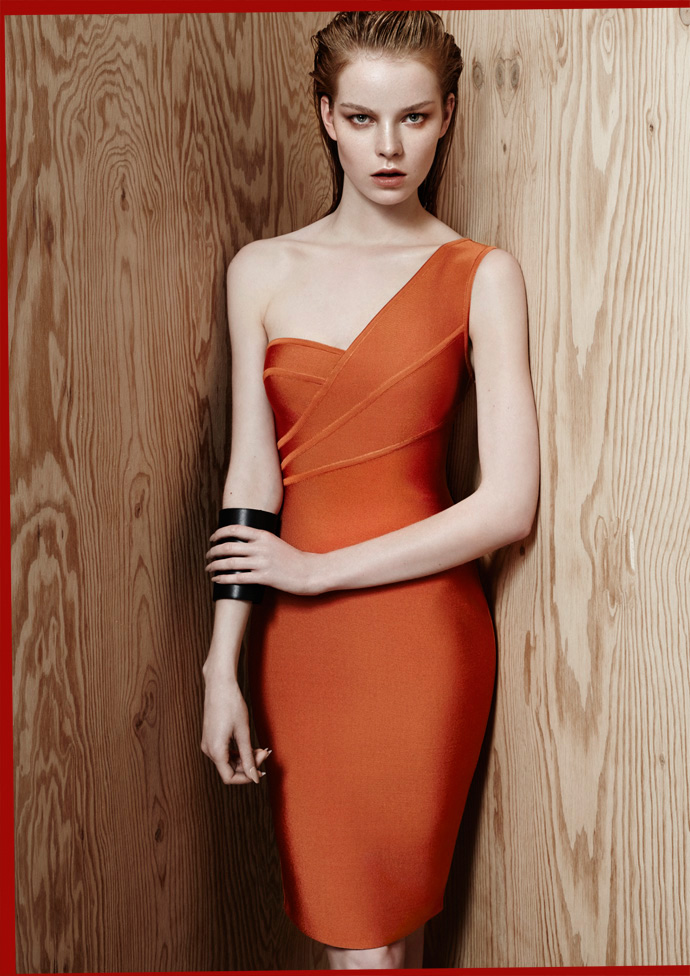 Gwen sports a Pumpkin viscose aerodynamic dress. Photo by René Habermacher
Gwen sports a Pumpkin viscose aerodynamic dress. Photo by René HabermacherCREDITS
Creative Direction – The Stimuleye
Photography – René Habermacher
Styling – Suzanne von Aichinger
Jewelry – Fabien Ifires
Hair – Panagiotis Papandrianos
Make-up – Yannis Siskos
Manucure – Yumi Toyama
Models – Anna Martynova & Gwen Loos – NEXT
Styling Assistant – Chafik Cheriet
First Assistant Light – Laurent Pascot
Capture Assistant – Franck Aubert
Retouching – Dimitris Rigas
Text – Filep Motwary
Art Direction – Antoine AsserafThank you Versae Vanni
-

THE OPPOSITE OF GLOSSY
-“Nobody wants to invade Marseille” claims Rudy Ricciotti,
architect of the MuCEM.And yet everyone is flocking there since the Museum of Civilisations
of Europe & of the Mediterranean, dubbed MuCEM, opened its doors just weeks ago, the first national museum to open in the Phocean city, a project 11 years in the making.Having shot & directed the introductory ad campaign for this new institution, The Stimuleye introduces you to the man who designed it, a man as famous for the fights he picks as the building he designs.
Exclusive photos by René Habermacher.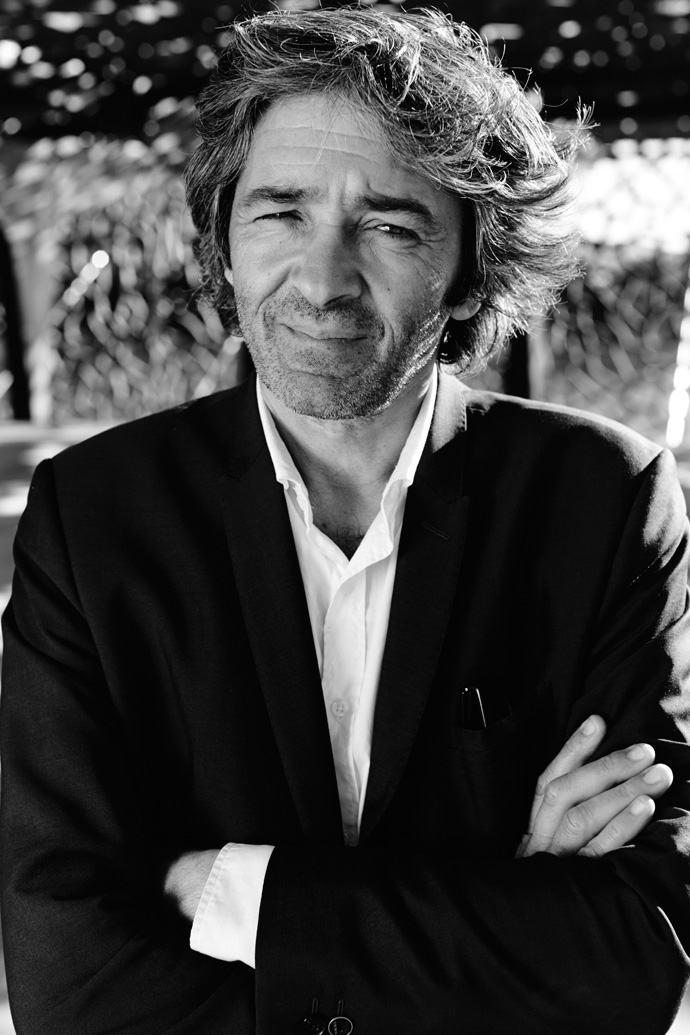 Portrait of architect Rudy Ricciotti by René Habermacher.
Portrait of architect Rudy Ricciotti by René Habermacher.One side is the Fort Saint-Jean, linked to the city by a pedestrian steel bridge. A fort not unlike the Bastille – a bastion to defend Marseille against itself – the Fort Saint-Jean had been closed to the public for centuries.
On the other, also connected by a massive steel bridge, is Ricciotti’s creation, facing the Mediterranean Sea.
Refusing “architectural bling,” Ricciotti chose to have the new building dematerialize itself to complement the Fort Saint-Jean.No reflections – leave it to the sea.
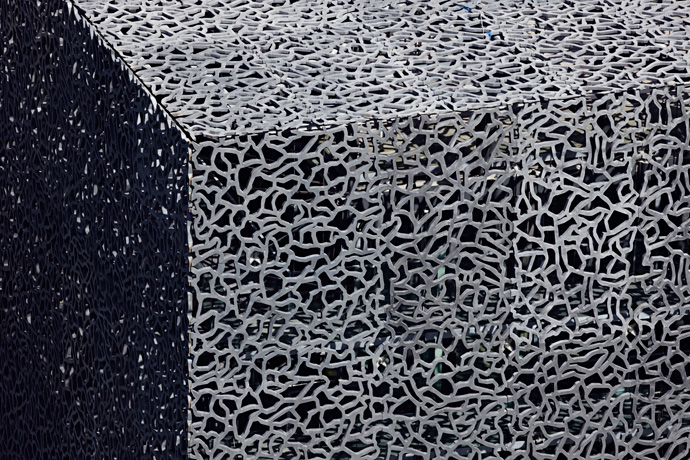
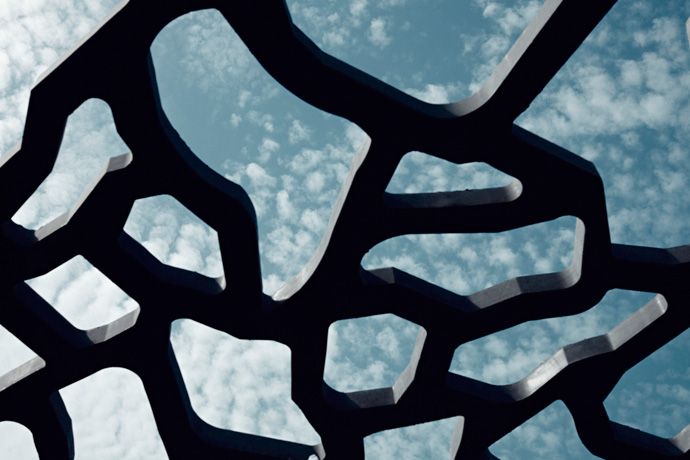
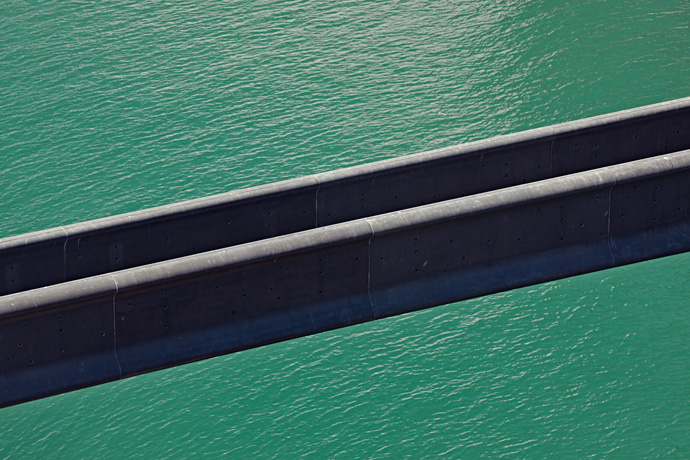
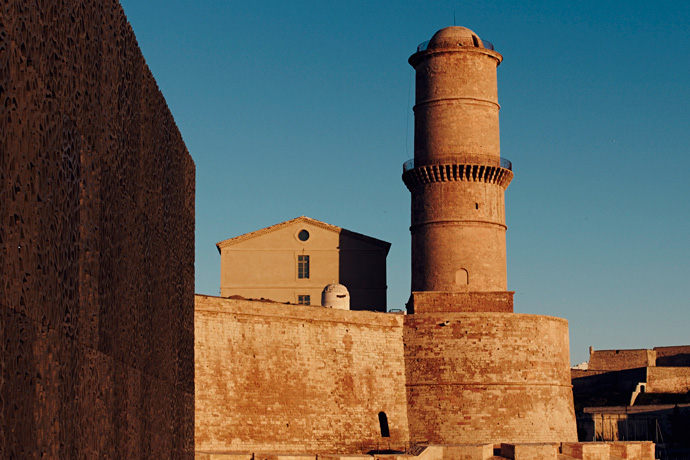 The concrete filigree lace of the MuCEM, a second skin like a screen that allows views, light and air
to pervade the space. Photography by René Habermacher.
The concrete filigree lace of the MuCEM, a second skin like a screen that allows views, light and air
to pervade the space. Photography by René Habermacher.TV spot for the MuCEM's launch, directed by Antoine Asseraf with SayWho and Agence White.
 The MuCEM's a porous monolithic body planted on pier J4 in the Mediterranean sea, connected to the Fort Saint-Jean
with a 115m long slender pathway made of massive cast iron. Photography by René Habermacher.
The MuCEM's a porous monolithic body planted on pier J4 in the Mediterranean sea, connected to the Fort Saint-Jean
with a 115m long slender pathway made of massive cast iron. Photography by René Habermacher.Antoine Asseraf: Can you elaborate on your theory of world being split between two sides, matte and shiny ?
Rudy Ricciotti: Shiny is conceptual distance, reason, power and self-assurance.
Matte is frontal narration, intuition, defeat and regret.
Pick your side… I did.AA: Mediterranean is a concept going beyond “local” but stopping short of “global” — how do you situate yourself, and the building, within that notion ?
RR: The South is a travel certificate, not a birth certificate.
The inhabitants of Munich are more mediterranean than those of Grenoble.
The Valais region in the south of Switzerland more latin than the Vaucluse in the south of France, etc.
The MuCEM is mediterranean through anxiety and existential difficulty.AA: What is your relationship to monumental architecture ?
RR: You are talking to me, you fucked my wife ?
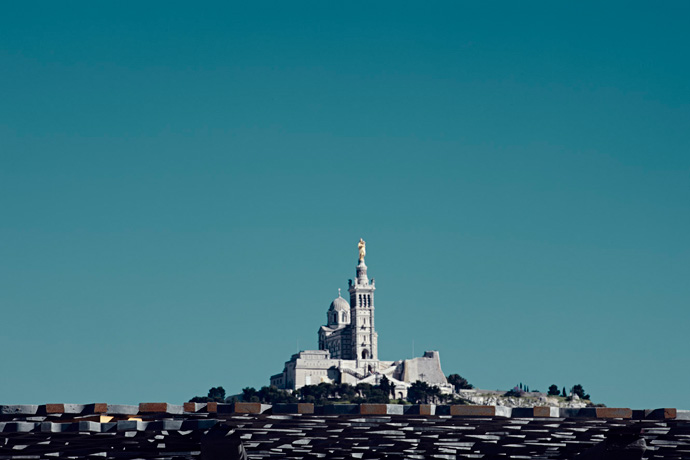
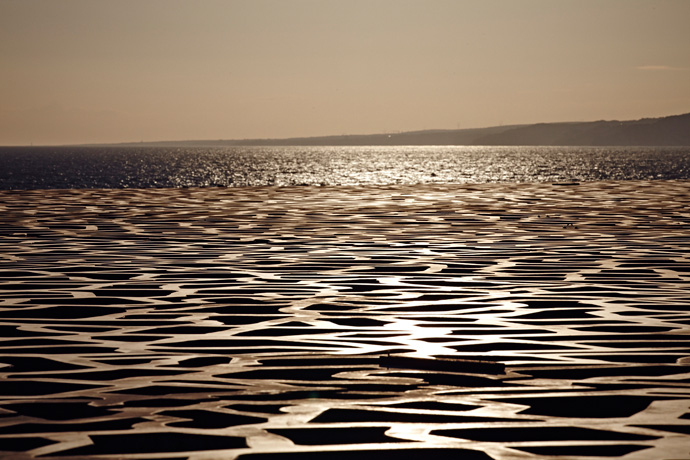
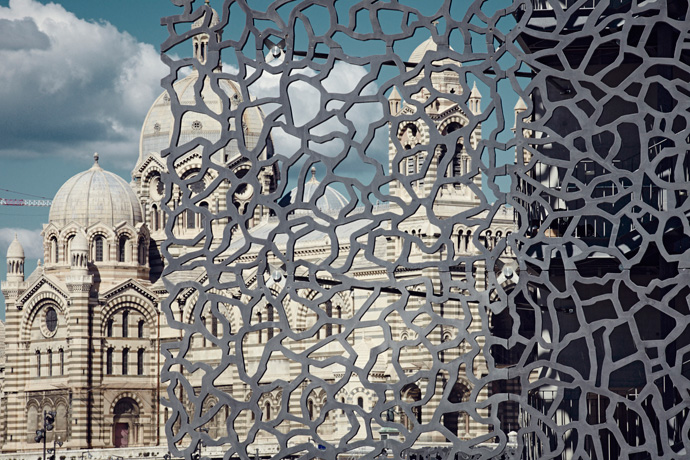
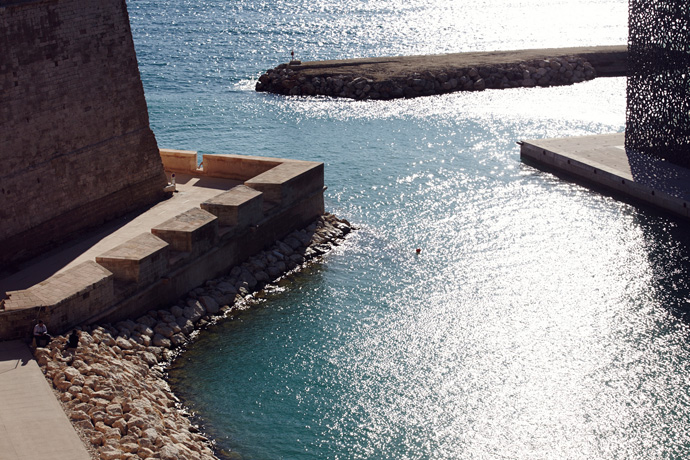 Top left: "Notre-Dame de la Garde" looming over Marseille and the the seven-level, 40 000 square meter
structure of the MuCEM. Photography by René Habermacher.
Top left: "Notre-Dame de la Garde" looming over Marseille and the the seven-level, 40 000 square meter
structure of the MuCEM. Photography by René Habermacher.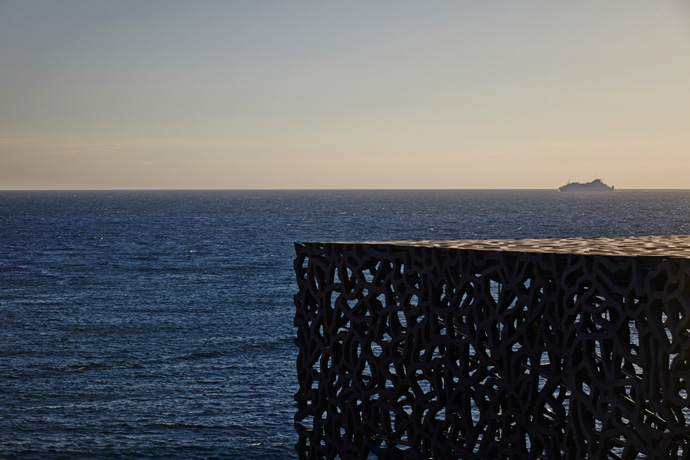
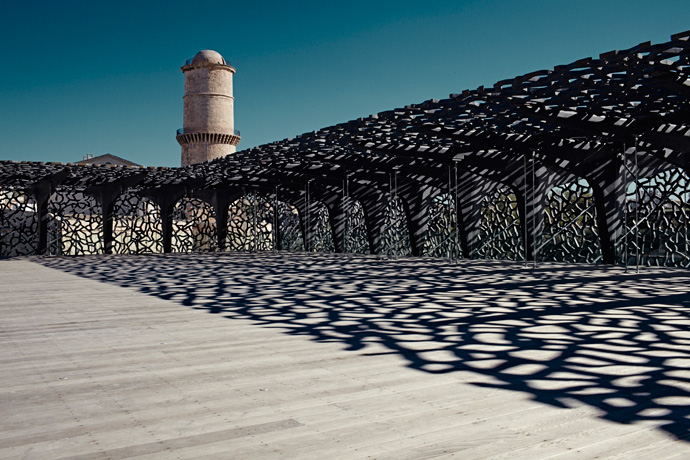
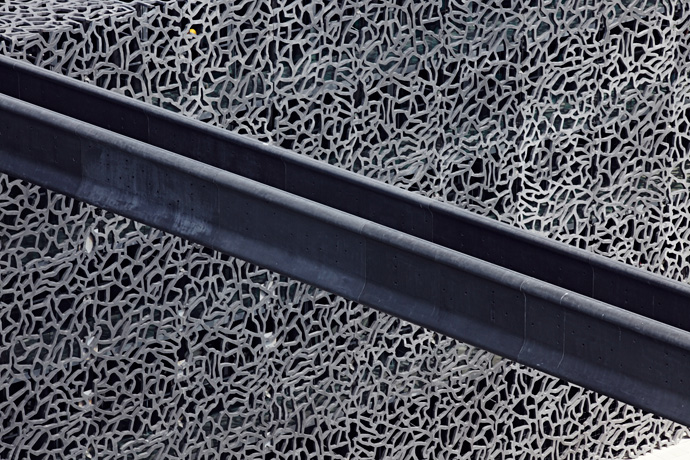
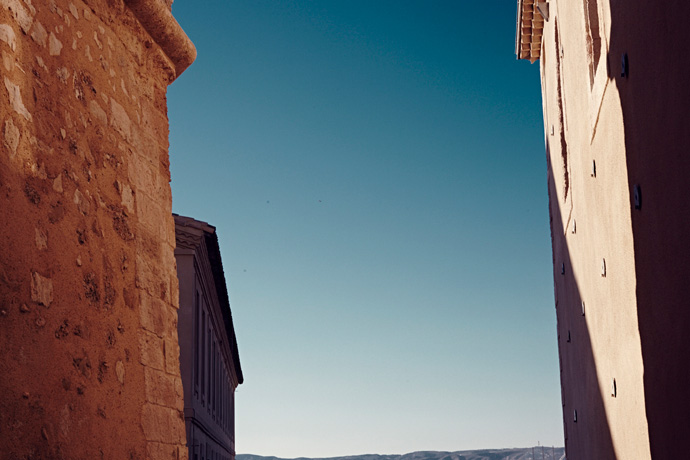 As massive the volume of the MuCEM may seem at first, it is the use of negative space that gives the building
the air of the metaphysical. Photography by René Habermacher
As massive the volume of the MuCEM may seem at first, it is the use of negative space that gives the building
the air of the metaphysical. Photography by René HabermacherAA: What is the last thing which stimulated you ?
RR: A fish soup made by my partner…
Read my last pamphlet to smile:
« L’Architecture est un sport de combat » [Architecture is a combat sport], edited by Textuel.With SayWho & Agence White
-

HYERES EXPRESS EPILOGUE
-The 28th edition of the Hyères Fashion & Photography Festival is over, but the spirit remains…
Featuring jury interviews, concerts and awards, of course.
28TH INTERNATIONAL FASHION & PHOTOGRAPHY HYERES 2013
HYERES EXPRESS
06 AWARDS
07 MOODA THE STIMULEYE PRODUCTION
directed by Antoine Asseraf
filmed & edited by Julien Pujol & Thibault Della Gaspera
coordination Clementine Colson
interviews Filep Motwary
sound design Ça Va Chéri -

HYERES 2013 EXPRESS 04 DESIGNERS + 05 FASHION SHOW
-Hyères Again. And Again.
28TH INTERNATIONAL FASHION & PHOTOGRAPHY HYERES 2013
HYERES EXPRESSA THE STIMULEYE PRODUCTION
directed by Antoine Asseraf
filmed & edited by Julien Pujol
coordination Clementine Colson
interviews Filep Motwary
sound design Ça Va Chéri -

HYERES 2013 EXPRESS 03 EXHIBITIONS
-Besides the photo and fashion competitions, one of the Hyères festival’s strongpoints are the original exhibitions it curates. Amongst this year’s shows, Lacoste designer and 2002 Hyères winner Felipe Oliveira Baptista, up and coming photo/video/grapher Pierre Debusschere, 2001 Hyères winner photographer Charles Fréger, and ROUGH PROOF, a look at the early works of Guy Bourdin with special pieces from the private collection of Marie Laure de Noailles… of course.
A THE STIMULEYE PRODUCTION
directed by Antoine Asseraf
filmed & edited by Thibault Della Gaspera
interviews Filep Motwary
coordination Clementine Colson
sound design Ça Va Chéri -

HYERES EXPRESS: PIERRE DEBUSSCHERE
-Having seen his work evolve over the years, we are proud to announce Pierre Debusschere’s new project premiering at Hyères Fashion & Photography Festival, an installation featuring original photo and video, “I know simply that the sky will last longer than I.”
Pierre Debusschere, Portrait by Filep Motwary.
Is this your first solo show?
I did small solo shows before but i like to think of this one as my first one because it is the first time the work has been thought of for an exhibition medium.How does it feel exhibiting alongside someone like Guy Bourdin?
It is already an honour to be present at the Villa but even more to be next to Bourdin.Your subjects-models are worked in a way to look like paintings, what is your aim exactly ?
The painting, the Flemish painters are a big influence for me, there is no specific aim linked to the painting besides the connection to my inspirations.
The technique that looks like paint that you are referring to is there more in the idea layers, different layers that gives the image different steps of reading.Photo by Pierre Debusschere.
Photo by Pierre Debusschere.
Your show’s theme is beauty versus ugliness. What are your true influences? Is it connected to the work of Umberto Eco ?
Beauty versus ugliness is one of the themes worked in this show, the idea of what is beautiful or ugly today. Yes it is linked to Eco’s work, reading his book
on ugliness helped me a lot in this show.Your work is tied to the digital medium. Can you imagine yourself working in a previous era ?
For sure I can see myself working in a previous era, it is not about digital, it is more about the medium that fits the time, the idea of NOW.Photo by Pierre Debusschere.
You have created yourself a whole structure with 254 Forest, which allows you to do an original photo series, a book, an installation and a film… How important is organization to be an artist today ?
Yes I would not have been able without my team to create the photo-series, the book, the installation, the film, the soundtrack and the website !It is always about Team work for me and I’m really grateful to have them besides me. Organisation is a big part of the work, even more for project like this when we created all this body of work in 2 months. Today you need to be able to react really fast because of the technology era we live in, so that’s why a team is important too !
You need to be present on every aspect of production at the same time ! But then we can not forget sometimes that we need to disconnect ourselves 😉
-

-

-

-

-

-

-

-

-

-

HYERES 2013 EXPRESS 02 DESIGNERS
-The festival is about to start. In 1 hour the jury headed by Felipe Oliveira Baptista will discover the 10 designers in competition for the first time.
A THE STIMULEYE PRODUCTION
directed by Antoine Asseraf
filmed & edited by Julien Pujol
interviews Filep Motwary
coordination Clementine Colson
sound design Ça Va Chéri -

HYERES EXPRESS 2013/ JURY PREVIEW / IMRAN AMED
-One of the most unexpected and influential sites in fashion today is Business of Fashion. Imran Amed, its founder and editor, answers our questions before joining the Hyères 2013 Fashion jury.
Photo by Scott Trindle.
AntoineAsseraf: Along with Industrie Magazine and the rise of the fashion blogger as a class, your blog has drawn attention to a lot of work, which was heretofore considered a bit peripheral to a designer’s raw talent. What do you make of a place like Hyères that still somehow naively stresses the belief that talent will find its own way? If you were to create a Business of Fashion competition/festival, how different would it be?
Imran: At BoF, we firmly believe in the power that lies at the intersection of creativity and business. Both are essential to a successful fashion enterprise, and one can’t work without the other. It’s a true symbiotic relationship. If we were to do a BoF festival therefore, it would be a combination of creative fashion presentation and business plan pitches, and the judges would come from both sides of the industry.
FilepMotwary: It seems to me that many of the young designers who dream of a future in fashion are unaware about “the business” of fashion in general. Should they worry of how things have evolved, and turned the industry into this huge marathon of task, values that need to be constantly re-valued, trends that suffers from the lack of longevity etc…?
Imran: I tell my students that once they start their own business, they will spend 90% of their time managing the business, and only 10% of the time designing. This balance is not something that has necessarily changed in recent years, but it’s true that there is more and more for a young designer to do in the global, digital fashion world in which we live today.
Sean Santiago: The internet and its popular content-sharing platforms, i.e. Tumblr and Pinterest, are destabilizing traditional revenue streams faster than new ones are being created. How will original creative output find funding in the future and do you see crowdsourcing methods such as, for instance, a Kickstarter campaign, possibly becoming necessary to the creation of original artistic output? Or will a big brand always foot the bill when it comes to fashion-related content?
Imran: Brands and designers could certainly fund portions of their businesses — say specific collections or products — via crowdsourcing platforms. But ultimately, I suspect that they will need to turn to traditional forms of fundraising (selling equity or taking loans) in order to fund the business over the long term. A young fashion business is highly cash flow intensive, and therefore will likely require stable and planned funding in order to fuel growth and expansion.
Malibongwe Tyilo: BOF is recognized as one of the boldest voices in fashion writing, often publishing pieces that might not be appreciated by some PR people. Considering how important PR has become to design companies, how does that affect how the design businesses deal with you?
Imran: We are bold, but I believe we are also fair and balanced. Part of the role we see for ourselves at BoF is to surface and shed light on important industry issues that merit wider discussion and debate.If we can do so in a way that is balanced and fact-based, then most PR professionals seem to respect us for that.
Certainly, there are some who would prefer to control all the communication about their clients, but this is misguided and unrealistic.
28th International
Fashion & Photography Festival
Hyères 2013
April 26>29 -

HYERES EXPRESS 01 PREVIEW
-Less than 48 hours before the beginning of the festival, we bring you our first HYERES EXPRESS video, a quick preview with the people who make the Hyères Festival – founder and director Jean-Pierre Blanc, photography director Raphaelle Stopin, and fashion director Maida Gregory-Boina.
A THE STIMULEYE PRODUCTION
directed by Antoine Asseraf
filmed & edited by Thibault Della Gaspera
interviews Filep Motwary
coordination Clementine Colson
sound design Ça Va Chéri -

HYERES-EXPRESS 2013 DESIGNER PREVIEW: YVONNE POEI-YIE KWOK
-Netherlands (25). and last year I graduated from the Amsterdam Fashion Institute graduate (2012). She is now in research of possibilities to start her own label.
Portrait Filep Motwary.
How does it feel for you being selected for this year’s edition of Hyeres ?
It’s an honor to be selected for one of the top fashion competition in the world. It’s really nice to be in the South of France, meeting new people and working in a nice environment.How would you describe Hyeres in three words ?
Beautiful, cozy, atmospheric.What has been your favorite part of the process so far ?
Working in the garden at the Villa Noailles with sunny weather and great surroundings.In three words, what is your collection about ?
Marionettes, handwork and youthfulness.In what ways you think participating in a Festival like Hyeres will help you in the future ?
I think it’s a great platform to present yourself internationally. Getting in contact with different company’s, people in the industry and press is a great starting point to start your own label or to work for a fashion brand.28th International
Fashion & Photography Festival
Hyères 2013
April 26>29 -

HYERES EXPRESS 2013 / DESIGNER PREVIEW / XENIA LUCIE LAFFELY
-Swiss. Studied history of art and modern French before starting fashion design at the HEAD-Genève. About to start an internship at 3.1 Phillip Lim, with the prints team.
Portrait by Filep Motwary.
How does it feel for you being selected for this year’s edition of Hyeres?Three years ago when I came to the festival for the first time, it was love at first sight so to be a part of it today is a great honoured and I’m so touched and excited.How would you describe Hyeres in three words?
Warm, sharp and respectful.What has been your favorite part of the process so far?
Drawings and making collage.In three words, what is your collection about?
Preciousness, sentimentality and drawings..In what ways you think participating in a Festival like Hyeres will help you in the future ?
It will help me to be more aware of my own work and of the fashion world.28th International
Fashion & Photography Festival
Hyères 2013
April 26>29
HYERES EXPRESS 2013 / DESIGNER PREVIEW / HENNING JURKE
-Germany, Berlin. 28 years old. Studied at The Berlin University of the Arts, gratuated in October 2012. Working on his portfolio.
Portrait by Filep Motwary.
How does it feel for you being selected for this year’s edition of Hyeres?
Being selected feels like a dream came true.
How would you describe Hyeres in three words?
Inspiring, pleasant, fantastic.
What has been your favorite part of the process so far?
To meet the team of the Hyères Festival. It is great to have this people who give the support for me and my work.
In three words, what is your collection about?
Anticipation, melancholia, luck.
In what ways you think participating in a Festival like Hyeres will help you in the future?
The Festival is a great platform to represent me and my work as a designer. The team helps each designer , giving a great support with the shows and also the showroom. I hope to find a job as a designer in a house…28th International
Fashion & Photography Festival
Hyères 2013
April 26>29
HYERES EXPRESS 2013 / DESIGNER PREVIEW / SHANSHAN RUAN
-A Chinese national living in Paris who graduated from ESMOD, and works as freelance for a Japanese fashion houses and fashion galleries.
Portrait Filep Motwary.
How does it feel for you being selected for this year’s edition of Hyeres ?
Unexpected and magic! I ‘ve been following Hyères while I was still a fashion school
student and I never got the time and the courage the send my file. Now it has been three years since my graduation and I would love to do something for my own, without too much restriction. It’s great Hyères gave me this opportunity.
How would you describe Hyeres in three words ?
Energy, Exchange, Experience.
What has been your favorite part of the process so far ?
Hyères allows us to work with the professionals from the fashion industry. I mean not only the ‘Glamour’ part of fashion, but also the very ‘technique’ part, the fabric and accessories suppliers, the production factories, the dyeing experts, the pleating artisan. It is great to get to know them and to work with them. I’ve learned so much.
I appreciate their patience and kindness, without their help I will never complete the
collection as I expected.
In three words, what is your collection about ?
Movements, Sentiments,Memories.
In what ways you think participating in a Festival like Hyeres will help
you in the future ?
Hyères gives us opportunities to know people, to build the connections, but also, get us , designers known by other people, to let people hear our voice, know about our work, our stories. Hyères is not just an event that happens and ends, it’s a continuation.28th International
Fashion & Photography Festival
Hyères 2013
April 26>29
HYERES EXPRESS 2013 / DESIGNER PREVIEW / XING SU
-From China/Northern Ireland/Canada. Age 26. Studying at Fashion Institute of Technology, NY.
Portrait by Filep Motwary.
How does it feel for you being selected for this year’s edition of Hyeres?
It is an incredible compliment to be selected for a fashion festival with such a long and distinguished history. I’m excited and a bit anxious.How would you describe Hyeres in three words?
A warm fantasy.What has been your favorite part of the process so far?
Working with an amazing professional team to elevate a first collection and being surrounded by other designers who share similar goals, ideas, and opinions about fashion.In three words, what is your collection about?
Play and balance.In what ways you think participating in a Festival like Hyeres will help you in the future?
Exposure and publicity are so critical to one’s success in fashion now, and I can’t imagine a better platform than the Hyeres Festival.28th International
Fashion & Photography Festival
Hyères 2013
April 26>29
HYERES EXPRESS 2013 / DESIGNER PREVIEW / SATU MAARANEN
-Helsinki, Finland.Graduated this Christmas from Aalto University, School of Art, Design and Architecture. At the moment she designs prints and garments as a freelancer for different companies.
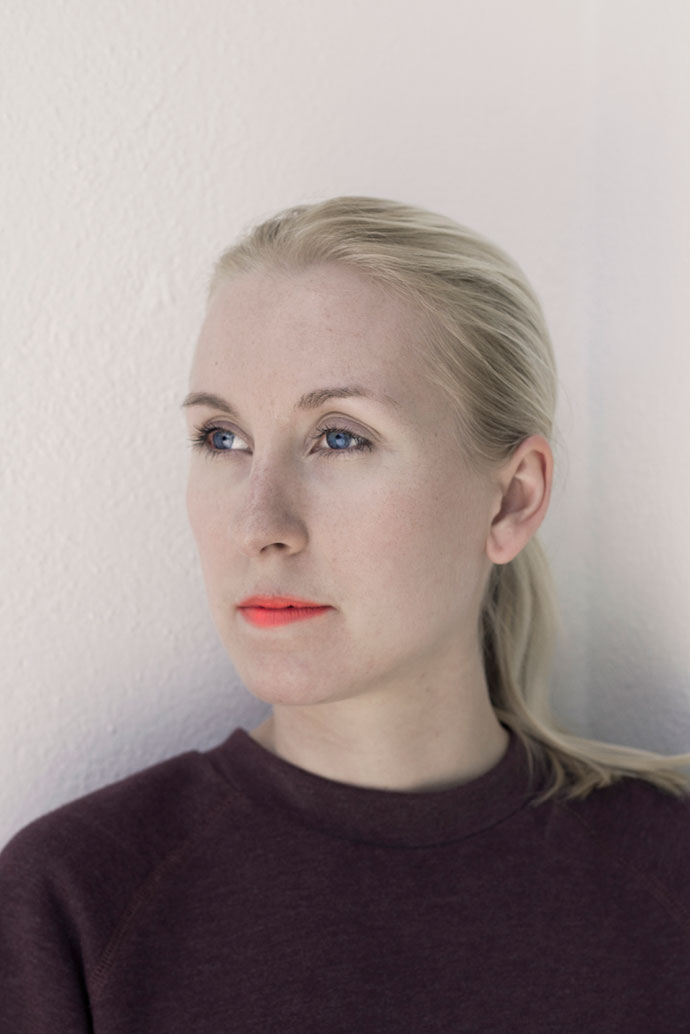
Portrait by Filep Motwary.
How does it feel for you being selected for this year’s edition of Hyeres?
It feels really great. I am superhappy about it. Hyeres is impressive opportunity to present your work for international audience.How would you describe Hyeres in three words?
Delicious food, sunshine and same-minded people.What has been your favorite part of the process so far?
The favorite part of the process has been doing all the openscreen prints. To do it freestyle is fun and relaxing for me.In three words, what is your collection about?
Landscapes, old Haute Couture and innovative materials.In what ways you think participating in a Festival like Hyeres will help you in the future?
It will help me to get new working opportunities and to create important connections. It is also going to be interesting to get feedback from all the fashion professionals..28th International
Fashion & Photography Festival
Hyères 2013
April 26>29
HYERES EXPRESS 2013 / DESIGNER PREVIEW / DAMIEN RAVN
-Norway (31). MA graduate from the Royal Academy in Antwerp. Runs his own label and teaches design for 3BA at the Fashion Department of the Warsaw Fine Arts Academy.
Portrait by Filep Motwary.
How does it feel for you being selected for this year’s edition of Hyeres?
Purely very honored.How would you describe Hyeres in three words?
Historic, impressive and panoramic.What has been your favorite part of the process so far?
Working together with all the sponsors to develop new parts of the collection especially for the festival.In three words, what is your collection about?
Bonded minimalistic maximalismIn what ways you think participating in a Festival like Hyeres will help you in the future?
I know Festival Hyeres is a wonderful opportunity to show your collection to the world and it will hopefully open some doors in the future.28th International
Fashion & Photography Festival
Hyères 2013
April 26>29
HYERES EXPRESS 2013 / DESIGNER PREVIEW / TOMAS BERZINS & VICTORIA FELDMAN
-Tomas Berzins / From Riga, Latvia / 21 years old / graduated from ESMOD Paris 2011 / co-owner of victoria/tomas label.
Victoria Feldman / From Moscow, Russia / 24 years old / graduated from ESMOD Paris 2011 / co-owner of victoria/tomas label.
Portraits by Filep Motwary.
How does it feel for you being selected for this year’s edition of Hyeres?
This is just great to have the opportunity to present our experimental collection, that was developed specially for this Festival. As well to have people around who are interested in it.
How would you describe Hyeres in three words?
Eat, Pray, Create.
What has been your favorite part of the process so far?
Most of the clothes we create are ready-to-wear. Participation in this Festival opened the doors to step a bit aside from wearability and to work more as an artists, bringing out many handmade and sophisticated technics that would not be easily adaptable to real urban life-style that we love so much. It gave us a certain freedom to combine both visions that we really care about.
In three words, what is your collection about?
Heritage, emotions, aggressiveness.
In what ways you think participating in a Festival like Hyeres will help you in the future?
This is a very rich start for a young designer and this is a priceless experience that you get, as it will be there for all your life.
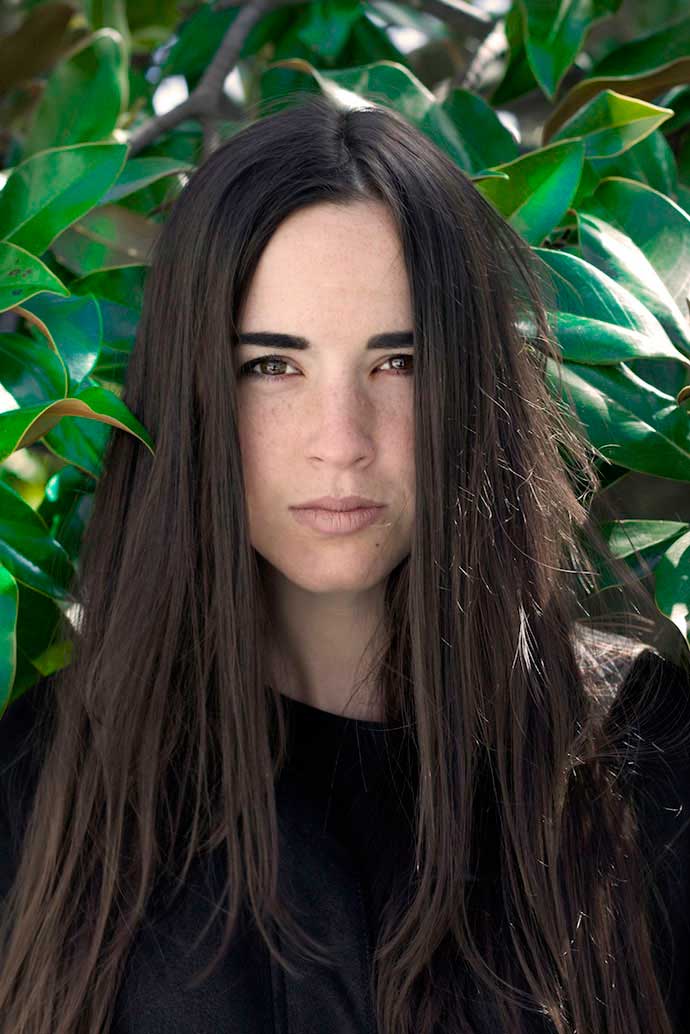
Portraits by Filep Motwary.
28th International
Fashion & Photography Festival
Hyères 2013
April 26>29
hyeres express: FLORIANE DE SAINT PIERRE
-Paris-based Floriane De Saint Pierre needs no introduction as today she considered as one of the ten most powerful women in fashion and beauty. She set up Floriane de Saint Pierre & Associés back in 1990. Twenty three years later she is the person all important fashion houses turn to in search for help to find an executive or designer. The list of successful matches consists of putting Christopher Bailey at Burberry, finding Alber Elbaz’s first creative director position, among so many others.
This year, she serves as jury member for the 28th edition of the Hyeres Festival, and answers the questions of the Hyères blogs.
Floriane de Saint Pierre, portrait by Ben Baker.
MalibongweTyilo: Having been responsible for hiring some of the biggest names, what would you say is the most common quality amongst designers who are able to head these successful mega brands?
Each of the designers has a crystal clear vision of their personal aesthetics. The most important factor for them has been their ability to look ahead of their time and translate their vision into something that you identify with.FilepMotwary: How relevant is creativity to the way the fashion industry functions today?
We can draw a parallel between the street photography of fifty years ago and what we see in fashion and design bloggers today- there has always been creativity, but what we are seeing is a huge shift in its expression. The expression of creativity is effortless today. However, creative design has never been more relevant and necessary than it is today. From fashion brands to Apple and Evian, etc. global brands absolutely recognize the importance of design as a factor in strong-value creation.AntoineAsseraf: Does your work end once a designer has been selected and hired
– or do you stay involved somehow ?
We always stay in touch.BrunoCapasso: Today the world imposes a new way of thinking, a reinvention in fashion, what new thing do you search in the new designers? How far does the media influence and disrupt your choices?
Designers must possess a personal aesthetic that resonates not only in fashion, but functions as a global creative proposition. Everyone today associates themself with a creative tribe and they are very demanding with the integrity- design, quality, services, and reputation- of a brand. Media is great for this- it is what gives design talent the chance to become visible and if there is genuine talent there, the media will be very supportive and loyal.SeanSantiago: The disconnect between Hedi Slimane’s last collection for Saint Laurent Paris and the work of his predecessors couldn’t be more striking or controversial. When judging these young designers based on their creativity and ingenuity, do you find yourself reconsidering the standards to which you hold a commercial designer like Slimane?
A product today makes sense only if it captures and reflects or even anticipates the profound sociological evolutions of its time. Hedi Slimane is a designer who thinks globally and very much ahead of his time. He knows what Saint Laurent means today.VogueGermany: Is there any candidate you’re already keeping an eye on ?
Yes, of course!28th International
Fashion & Photography Festival
Hyères 2013
April 26>29
